What To Know About Medicinal Herbal Teas

Some of the best medicinal herbal teas include ginger tea, which is renowned for its ability to soothe nausea, aid digestion, and reduce inflammation.
Chamomile tea is widely used for its calming effects, helping to ease anxiety and promote better sleep. Peppermint tea is known for its ability to relieve digestive issues such as bloating and indigestion, while also providing a refreshing and cooling sensation. Echinacea tea is often consumed to boost the immune system and may help reduce the duration of colds and flu.
Additionally, turmeric tea, which contains curcumin, is valued for its powerful anti-inflammatory and antioxidant properties, supporting overall health and well-being.
FREE Herb Drying Checklist
How to make sure every batch retains maximum flavor, color, and aroma without the risk of mold or over-drying. Eliminate guesswork and trial-and-error, making herb drying faster, easier, and more efficient every time.
Table of Contents
- 1. Urtica dioica
- 2. Salvia officinalis
- 3. Vitex agnus-castus
- 4. Zingiber officinale
- 5. Silybum marianum
- 6. Rosa canina
- 7. Camellia sinensis
- 8. Echinacea purpurea
- 9. Mentha piperita
- 10. Rosmarinus officinalis
- 11. Cnicus benedictus
- 12. Glycyrrhiza glabra
- 13. Lavandula angustifolia
- 14. Achillea millefolium
- 15. Piper nigrum
- 16. Curcuma longa
- 17. Hypericum perforatum
- 18. Foeniculum vulgare
- 19. Cinnamomum verum
- 20. Matricaria chamomilla
- 21. Cuminum cyminum
- 22. Chamomilla recutita
- 23. Vitis vinifera
- 24. Thymus vulgaris
- 25. Nigella sativa
- 26. Pimpinella anisum
- 27. Cinnamomum zeylanicum
- 28. Equisetum arvense
- 29. Nymphaea alba
- 30. Melissa officinalis
- 31. Ginkgo biloba
- 32. Sabadilla tinctura
- 33. Sambucus nigra
- 34. Prunus domestica
- 35. Aloe barbadensis
- 36. Cymbopogon citratus
- 37. Pueraria lobata
- 38. Pelargonium graveolens
- 39. Petroselinum crispum
- 40. Valeriana officinalis
- 41. Leonurus cardiaca
- 42. Sanguisorba officinalis
- 43. Artemisia absinthium
- 44. Rhodiola rosea
- 45. Sanguinaria canadensis
- 46. Sutherlandia frutescens
- 47. Panax ginseng
- 48. Satureja hortensis
- 49. Eucalyptus globulus
- 50. Allium sativum
- 51. Lepidium meyenii
- 52. Piper methysticum
- 53. Paeonia suffruticosa
- 54. Nelumbo nucifera
- 55. Artemisia vulgaris
- 56. Boswellia serrata
- 57. Nepeta cataria
- 58. Vaccinium myrtillus
- 59. Origanum vulgare
- 60. Symphytum officinale
- 61. Cyperus rotundus
- 62. Plantago lanceolata
- 63. Paeonia lactiflora
- 64. Syringa vulgaris
- 65. Cannabis sativa
- 66. Hydrastis canadensis
- 67. Cymbopogon martinii
- 68. Moringa oleifera
- 69. Tribulus terrestris
- 70. Tilia europaea
- 71. Echinacea angustifolia
- 72. Calendula officinalis
- 73. Althaea officinalis
- 74. Plantago ovata
- 75. Cimicifuga racemosa
- 76. Centella asiatica
- 77. Taraxacum officinale
- 78. Berberis aristata
- 79. Dandelion
- 80. Prunus spinosa
- 81. Strychnos nux-vomica
- 82. Orthosiphon stamineus
- 83. Avena sativa
- 84. Artemisia annua
- 85. Rhus toxicaria
- 86. Tussilago farfara
- 87. Agrimonia eupatoria
- 88. Passiflora incarnata
- 89. Ananas comosus
- 90. Ocimum sanctum
- 91. Polygonum cuspidatum
- 92. Cucurbita pepo
- 93. Withania somnifera
- 94. Saponaria officinalis
- 95. Siberian ginseng
- 96. Cinnamon
- 97. Bacopa monnieri
- 98. Spiraea ulmaria
- 99. Salvia miltiorrhiza
- 100. Rhus typhina
1. Urtica dioica
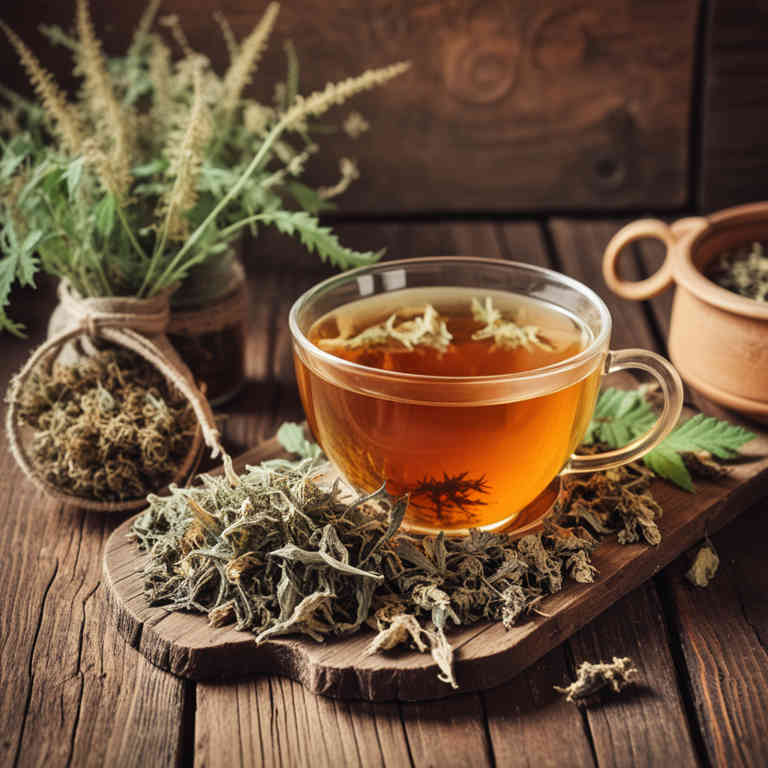
Urtica dioica herbal teas are used to support digestive health by stimulating the production of digestive enzymes and promoting regular bowel movements.
They are also valued for their anti-inflammatory properties, which can help alleviate symptoms of conditions like arthritis and skin irritations. Additionally, these teas are often consumed to detoxify the body and support liver function due to their high concentration of antioxidants and minerals. The diuretic effects of urtica dioica can aid in reducing water retention and promoting urinary health.
Overall, urtica dioica herbal teas are a versatile natural remedy that offers a range of health benefits when consumed responsibly.
2. Salvia officinalis
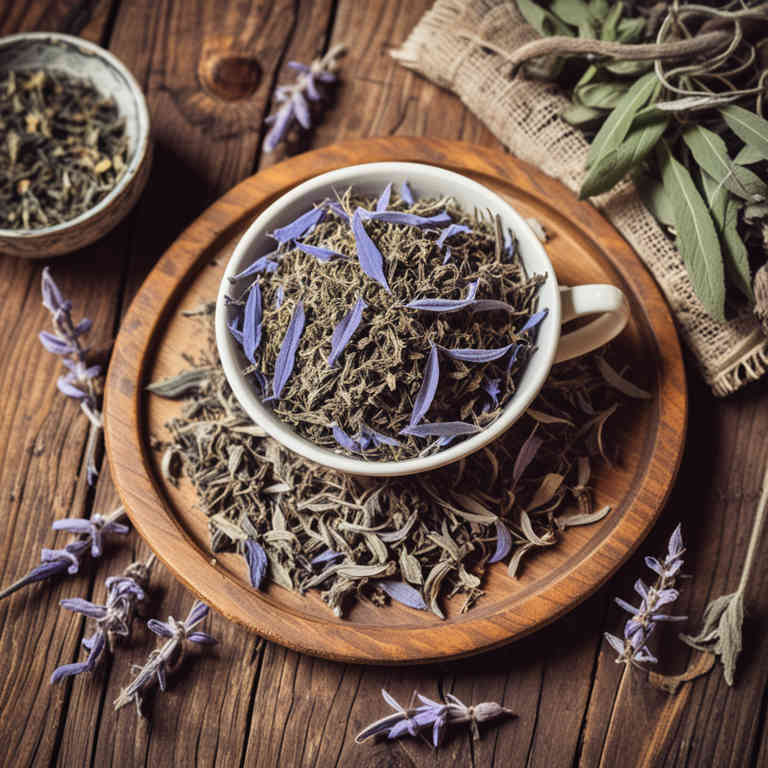
Salvia officinalis herbal teas are used to promote digestive health by soothing the stomach and reducing bloating.
They are also known to support respiratory function by helping to ease coughs and reduce inflammation in the airways. These teas can aid in stress relief due to their calming properties, which may help lower anxiety and improve mood. Additionally, salvia officinalis is believed to have antioxidant properties that contribute to overall wellness and immune support.
Because of these diverse benefits, salvia officinalis herbal teas are a popular choice for natural health remedies across various cultures.
3. Vitex agnus-castus
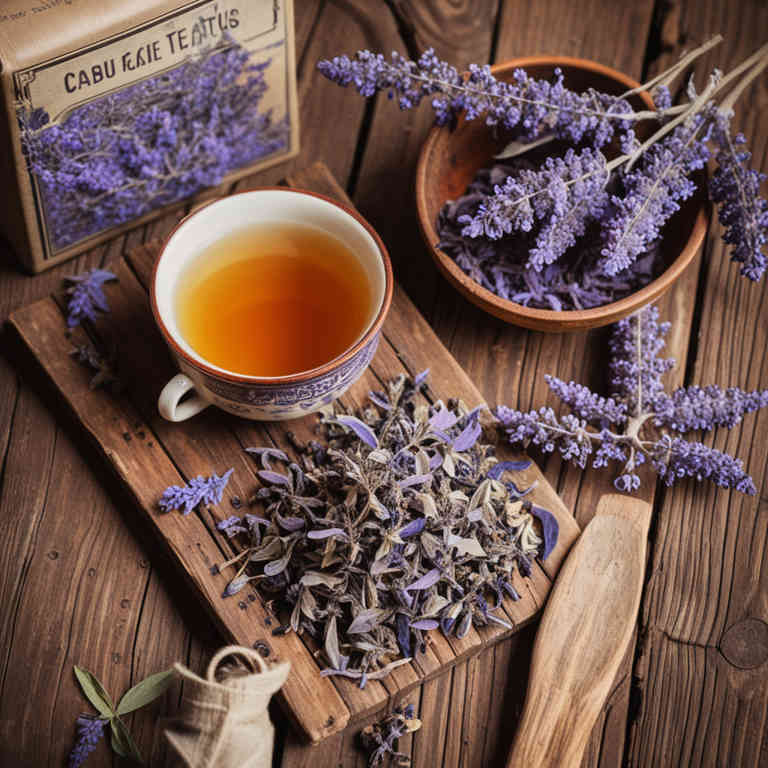
Vitex agnus-castus herbal teas are used to support hormonal balance, particularly in women experiencing menstrual irregularities or symptoms of premenstrual syndrome (PMS).
This herb is known to influence the pituitary gland, which can help regulate the production of hormones like prolactin and luteinizing hormone. It is also commonly used to alleviate symptoms such as breast tenderness, mood swings, and bloating associated with hormonal fluctuations. Additionally, vitex agnus-castus may aid in promoting fertility by supporting the menstrual cycle and ovulation.
Its adaptogenic properties make it a valuable natural remedy for women seeking to manage hormonal health without synthetic interventions.
4. Zingiber officinale
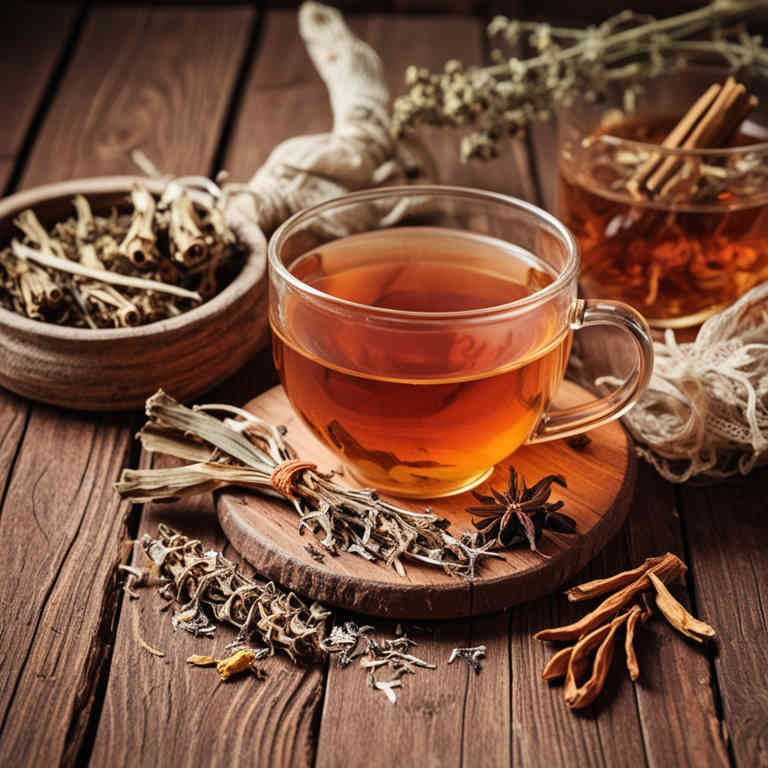
Zingiber officinale herbal teas are used to support digestive health by stimulating the production of digestive enzymes and reducing bloating and gas.
They are also commonly consumed to alleviate symptoms of nausea, particularly during pregnancy or after surgery, due to their calming and anti-emetic properties. The active compounds in ginger, such as gingerol and shogaol, have potent anti-inflammatory and antioxidant effects, making these teas beneficial for reducing muscle pain and inflammation. Additionally, zingiber officinale herbal teas can help improve circulation and may assist in reducing menstrual cramps, offering natural relief for women's health issues.
Overall, their versatility and therapeutic benefits make them a popular choice for promoting wellness and addressing a range of health concerns.
5. Silybum marianum
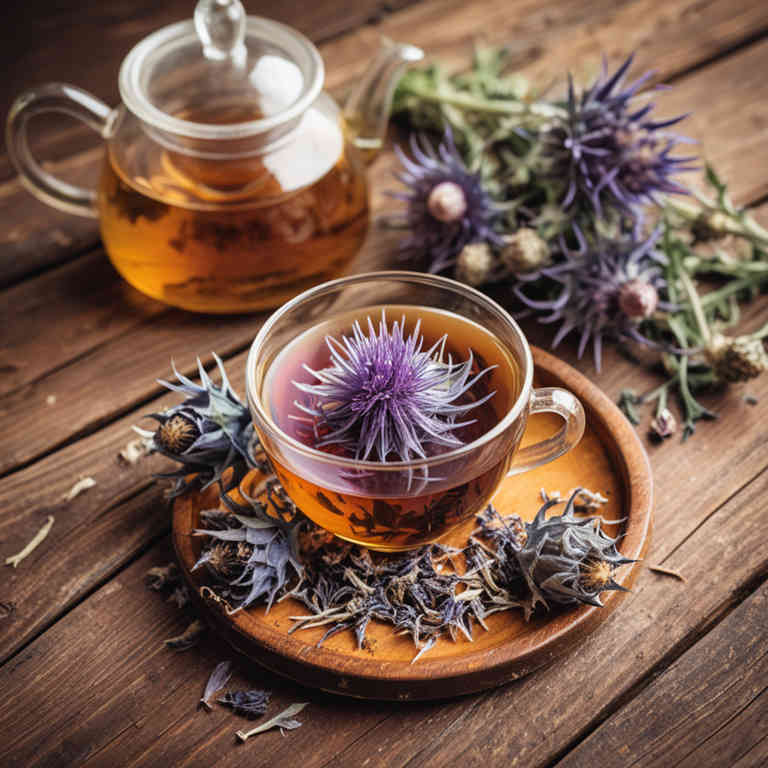
Silybum marianum herbal teas are used to support liver health and detoxification due to their high concentration of silymarin, a compound known for its antioxidant and anti-inflammatory properties.
These teas may help protect liver cells from damage caused by toxins, alcohol, and certain medications. They are also believed to promote the regeneration of liver tissue, making them a popular choice for those with liver disorders or those seeking to maintain optimal liver function. Additionally, silybum marianum herbal teas are sometimes used to alleviate symptoms of digestive issues such as bloating and indigestion.
Their natural composition makes them a preferred alternative for individuals looking for herbal remedies that are both safe and effective.
6. Rosa canina

Rosa canina herbal teas are used to support immune system function due to their high vitamin C content, which helps strengthen the body's defenses against infections.
These teas are also known to promote digestive health by soothing the gastrointestinal tract and reducing inflammation. Additionally, rosa canina is rich in antioxidants, making it beneficial for skin health and reducing the appearance of wrinkles. The tea can aid in reducing inflammation and may help alleviate symptoms of conditions like arthritis.
Overall, rosa canina herbal teas are valued for their natural healing properties and are often used as a complementary therapy in holistic health practices.
7. Camellia sinensis
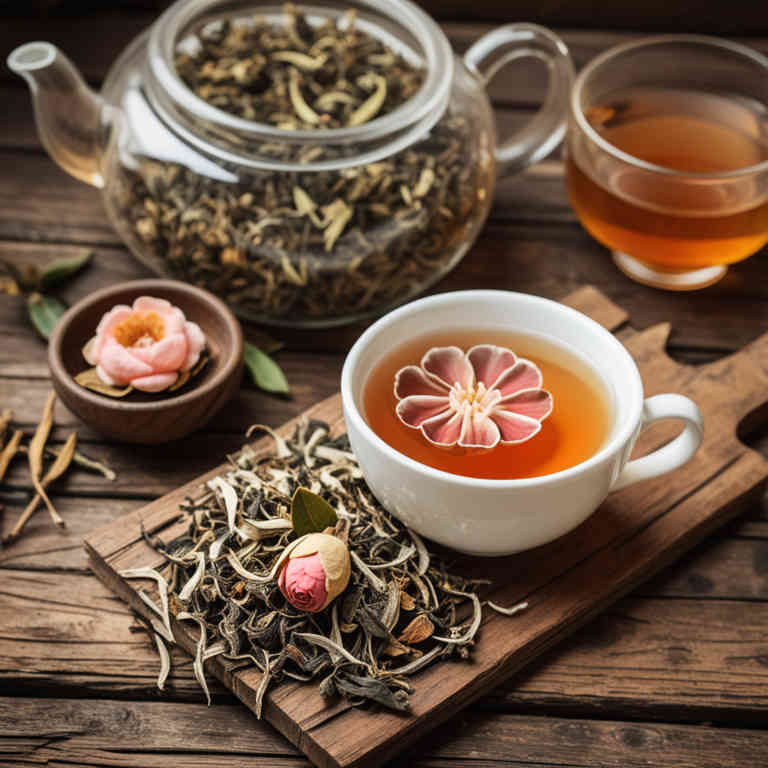
Camellia sinensis herbal teas are used to promote relaxation and reduce stress due to their calming properties.
These teas contain antioxidants and bioactive compounds that support overall health and well-being. They are also known to enhance mental clarity and focus, making them popular among students and professionals. Additionally, camellia sinensis herbal teas can aid in digestion and may help in managing weight by increasing metabolic activity.
Their versatility in flavor and form makes them a preferred choice for people seeking natural remedies and daily wellness support.
8. Echinacea purpurea
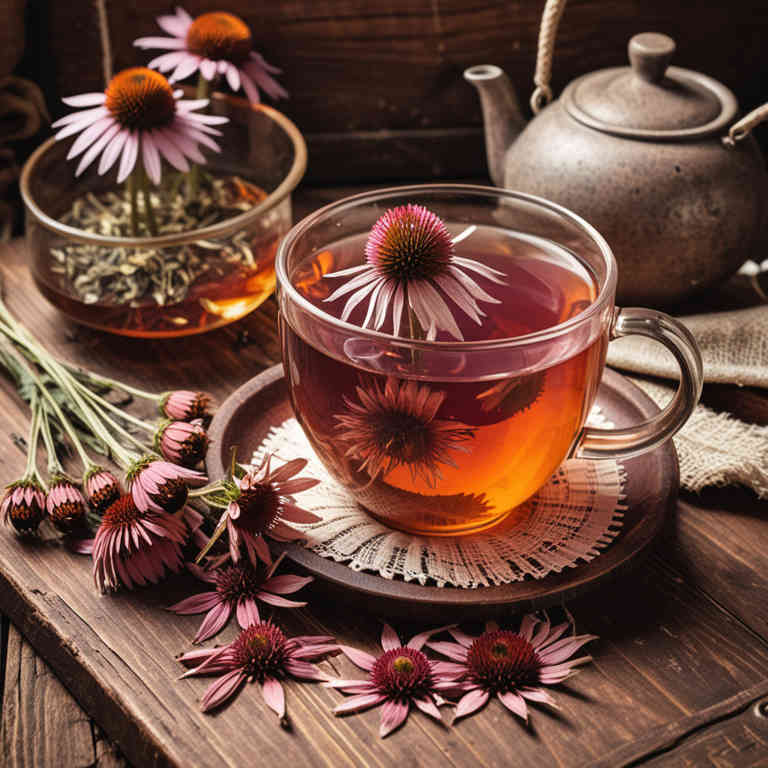
Echinacea purpurea herbal teas are used to support the immune system and reduce the severity and duration of colds and flu.
They contain bioactive compounds such as alkamides, caffeic acid derivatives, and polysaccharides, which have anti-inflammatory and immunostimulant properties. These teas are often consumed during the cold and flu season to help the body fight off infections more effectively. Additionally, they may help alleviate symptoms such as sore throat and nasal congestion.
Their natural origin and relatively mild side effects make them a popular choice for those seeking alternative remedies for common ailments.
9. Mentha piperita
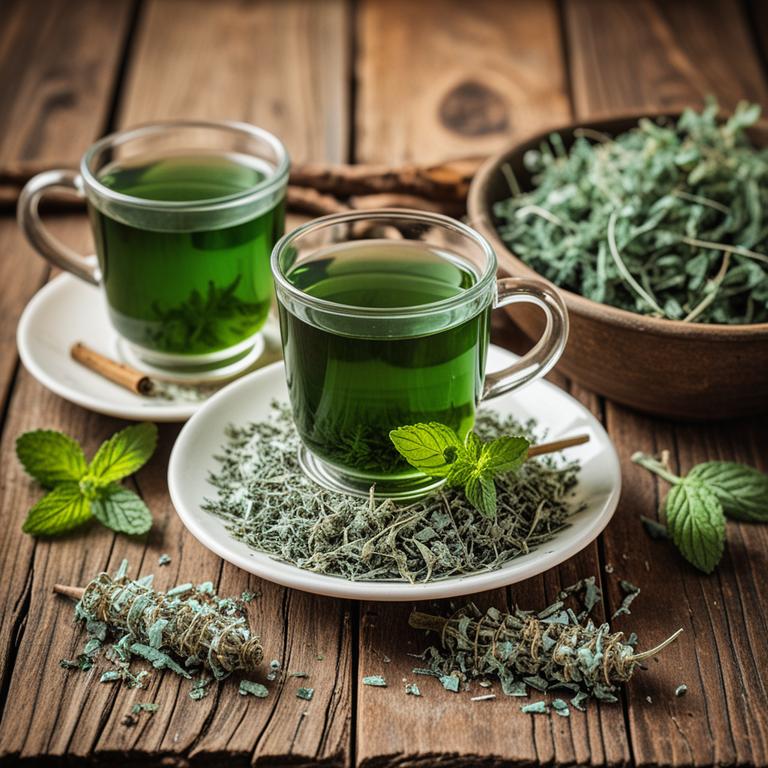
Mentha piperita herbal teas are used to relieve digestive discomfort and promote overall digestive health.
They contain compounds that can help ease symptoms such as bloating, gas, and indigestion by stimulating the production of digestive enzymes. These teas are also known to soothe sore throats and reduce inflammation due to their antimicrobial and anti-inflammatory properties. Additionally, mentha piperita can help alleviate nausea and support mental clarity by improving circulation and reducing stress.
Because of these benefits, it is a popular choice for those seeking natural remedies for both physical and mental well-being.
10. Rosmarinus officinalis

Rosmarinus officinalis herbal teas are used to promote mental clarity and enhance memory due to their high concentration of antioxidants and essential oils.
These teas are also known to support digestion by stimulating the production of digestive enzymes and reducing bloating. Additionally, they can help alleviate stress and anxiety by calming the nervous system and promoting relaxation. The anti-inflammatory properties of rosmarinus officinalis make it beneficial for skin health and may aid in reducing inflammation in the body.
Overall, these teas offer a natural way to support both physical and mental well-being.
11. Cnicus benedictus

Cnicus benedictus herbal teas are used to promote digestive health and ease gastrointestinal discomfort.
This herb is known for its mild laxative properties, which can help relieve constipation and improve overall bowel function. It also contains compounds that may reduce inflammation in the digestive tract, supporting gut health. Additionally, cnicus benedictus is believed to have mild diuretic effects, which can aid in detoxification and fluid balance in the body.
These benefits make it a popular choice in traditional herbal medicine for maintaining a healthy digestive system.
12. Glycyrrhiza glabra
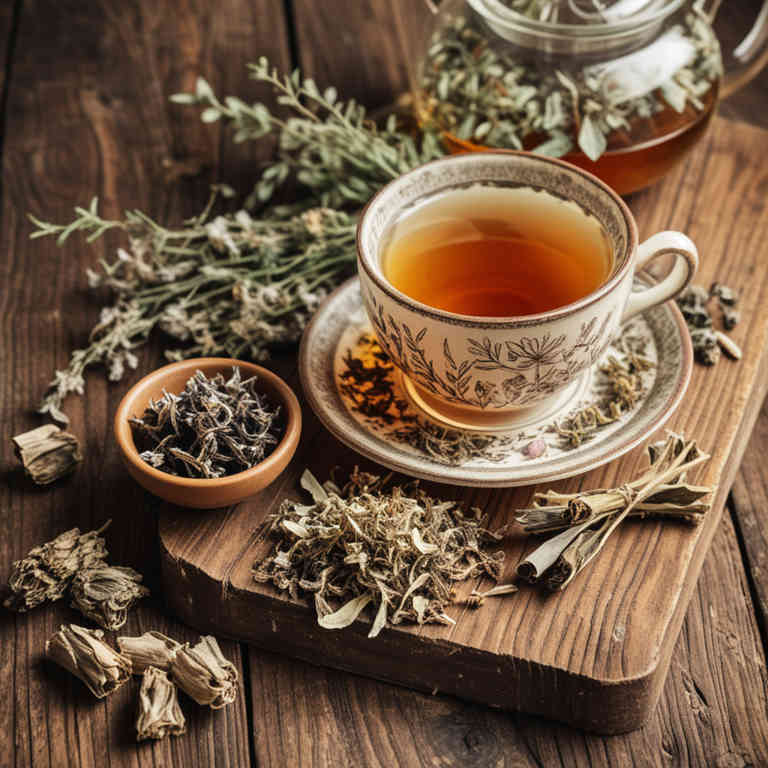
Glycyrrhiza glabra herbal teas are used to support respiratory health by soothing sore throats and reducing inflammation in the airways.
They are also known to aid in digestion by promoting the production of digestive enzymes and relieving symptoms of indigestion. This herb has been traditionally used to alleviate stress and anxiety due to its mild calming effects on the nervous system. Additionally, glycyrrhiza glabra teas may help in managing symptoms of coughs and colds by thinning mucus and easing congestion.
Their anti-inflammatory and antioxidant properties make them a valuable natural remedy for a variety of common health concerns.
13. Lavandula angustifolia
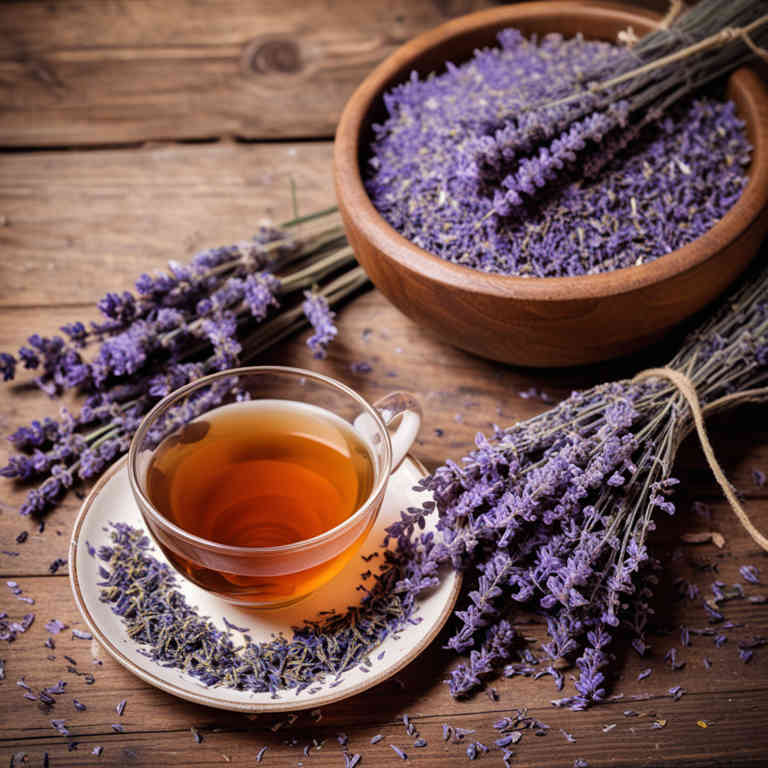
Lavandula angustifolia herbal teas are used to promote relaxation and reduce stress due to their calming properties.
They are also commonly consumed to alleviate symptoms of anxiety and insomnia by soothing the nervous system. The essential oils in lavender, such as linalool and lavandulyl acetate, contribute to their sedative and anti-inflammatory effects. These teas can aid in improving sleep quality and may help ease digestive issues like bloating and indigestion.
Overall, lavender tea is a popular natural remedy for its wide-ranging benefits that support both mental and physical well-being.
14. Achillea millefolium
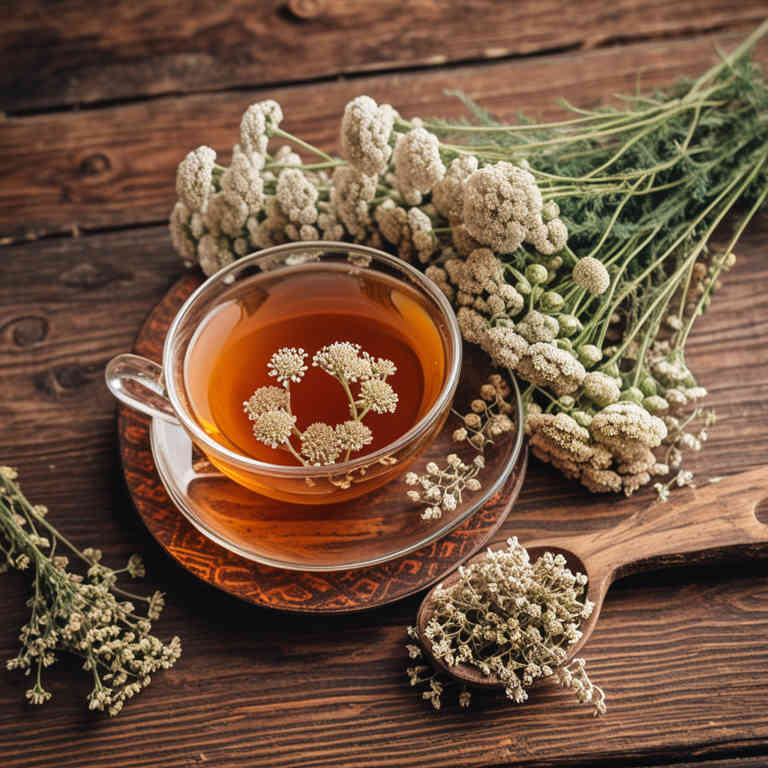
Achillea millefolium herbal teas are used to support digestive health by soothing the stomach and reducing bloating.
They are also known to help alleviate mild anxiety and promote relaxation due to their calming properties. This herb is often consumed to reduce inflammation and support the immune system, making it beneficial during cold and flu seasons. Additionally, achillea millefolium may aid in menstrual discomfort, helping to ease cramps and regulate menstrual cycles.
Its versatility and gentle nature make it a popular choice for those seeking natural remedies for various wellness needs.
15. Piper nigrum
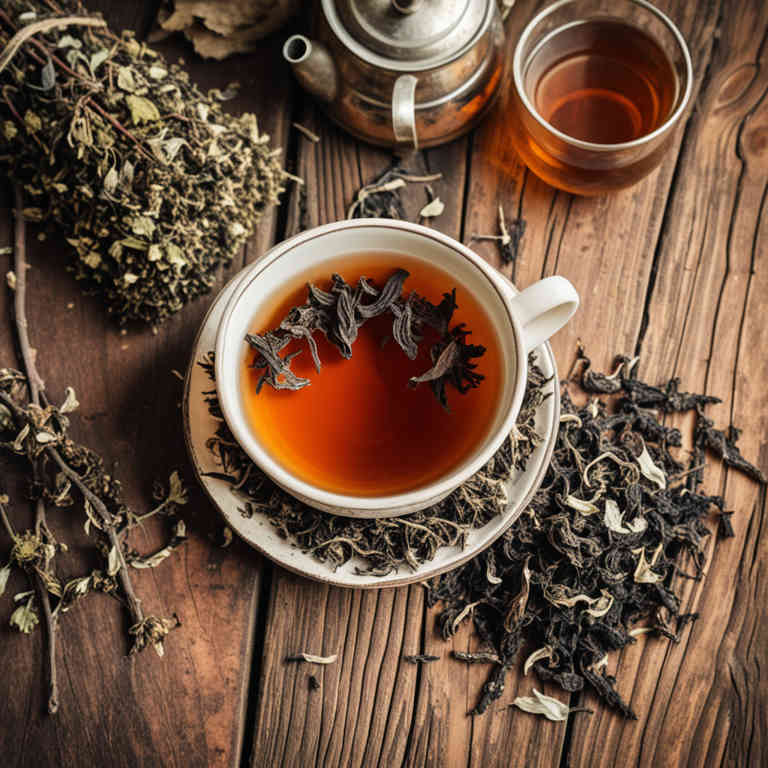
Piper nigrum herbal teas are used to support digestive health due to their ability to stimulate digestion and relieve gastrointestinal discomfort.
These teas are also valued for their potential anti-inflammatory and antioxidant properties, which may help in reducing inflammation and supporting overall immune function. Additionally, piper nigrum is known to have a warming effect on the body, making it beneficial for individuals experiencing cold or flu symptoms. The active compounds in black pepper, such as piperine, may enhance the absorption of nutrients and improve metabolic processes.
Overall, piper nigrum herbal teas are appreciated for their versatility in promoting wellness and supporting various bodily functions.
16. Curcuma longa
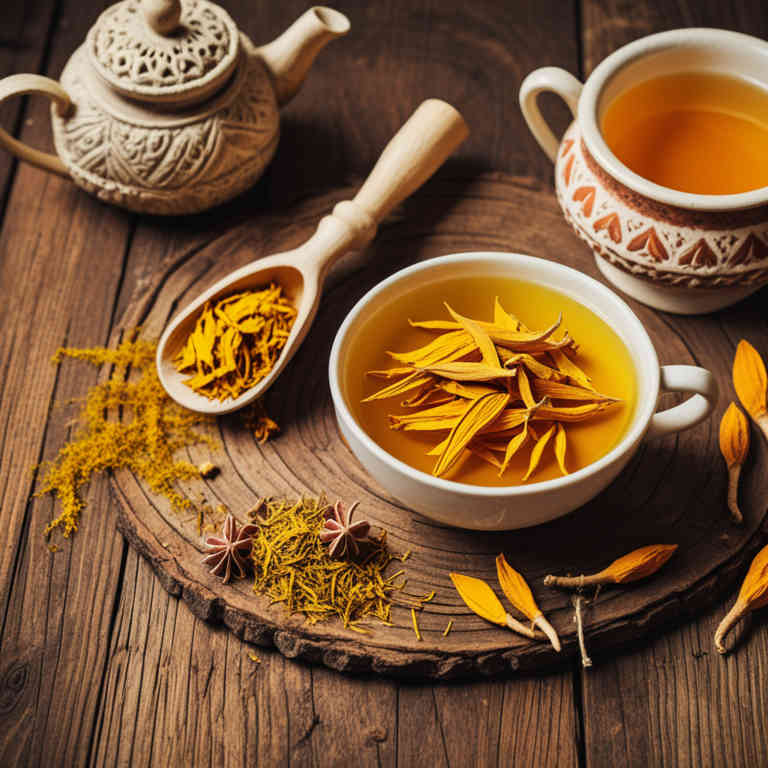
Curcuma longa herbal teas are used to support digestive health due to their anti-inflammatory and antioxidant properties.
These teas can help alleviate symptoms of indigestion, bloating, and gas by stimulating the production of digestive enzymes. The active compound curcumin in turmeric has been shown to reduce inflammation in the gut, making it beneficial for individuals with conditions like irritable bowel syndrome. Additionally, curcuma longa herbal teas may enhance the body's ability to detoxify by supporting liver function.
Overall, these teas are valued for their natural ability to promote overall wellness and improve gastrointestinal comfort.
17. Hypericum perforatum
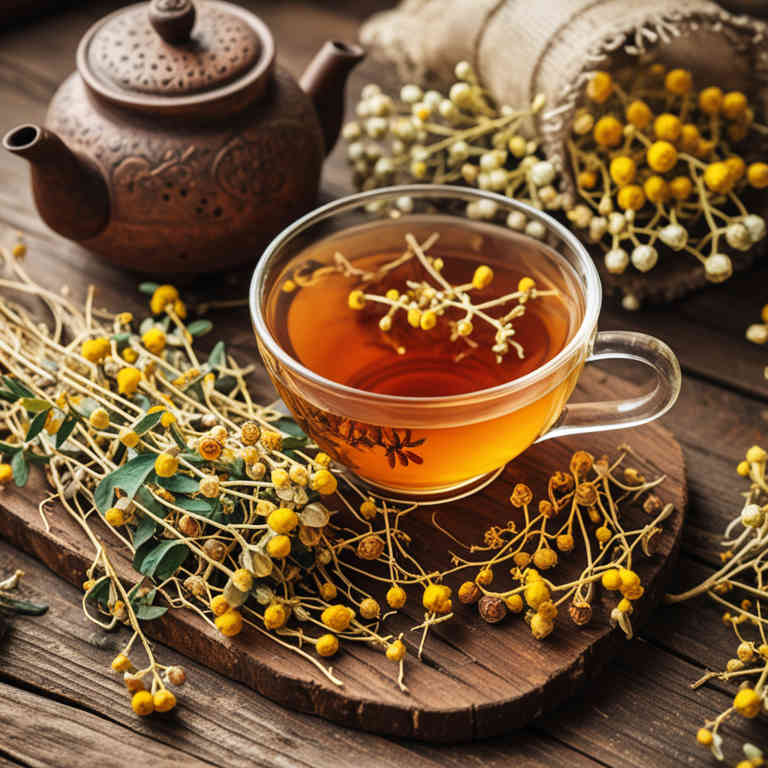
Hypericum perforatum herbal teas are used to support mental health and alleviate mild depression due to their potential antidepressant properties.
These teas contain compounds like hypericin and hyperforin, which may help regulate mood by influencing neurotransmitter activity in the brain. They are also traditionally used to ease symptoms of seasonal affective disorder, particularly during the darker winter months. Additionally, hypericum perforatum herbal teas may promote skin health by reducing inflammation and aiding in the treatment of minor skin conditions.
Overall, their calming effects and historical use in herbal medicine make them a popular choice for natural wellness support.
18. Foeniculum vulgare
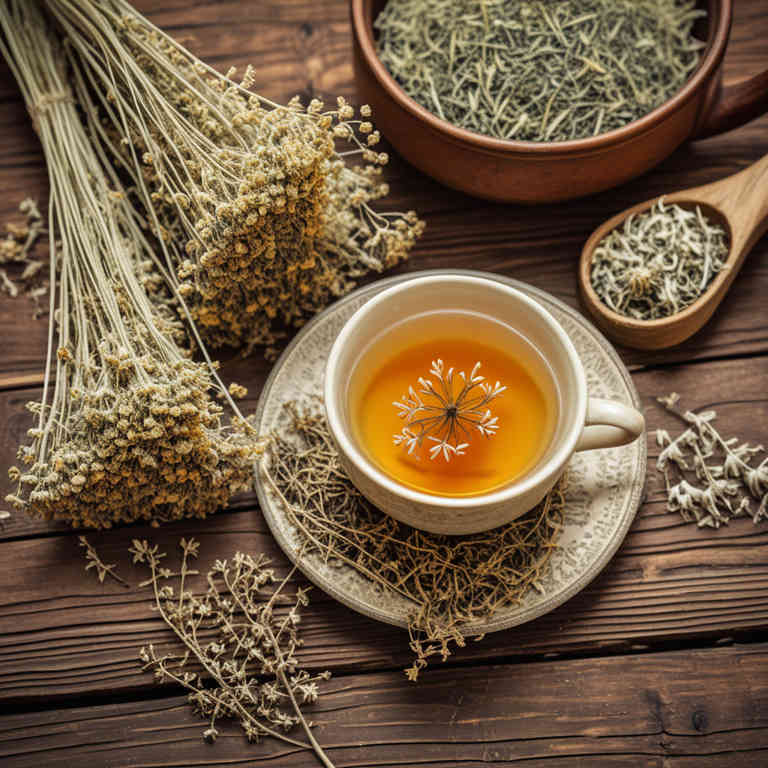
Foeniculum vulgare herbal teas are used to aid digestion and relieve gastrointestinal discomfort due to their carminative properties.
These teas can help reduce bloating, gas, and indigestion by stimulating the production of digestive enzymes. They are also known to soothe the stomach and ease symptoms of nausea, making them a popular remedy for digestive ailments. Additionally, the mild licorice-like flavor of the tea makes it pleasant to consume regularly.
Because of their calming and digestive benefits, foeniculum vulgare herbal teas are often recommended for those seeking natural support for digestive health.
19. Cinnamomum verum

Cinnamomum verum herbal teas are used to promote digestive health by soothing the gastrointestinal tract and reducing symptoms of indigestion.
These teas are also known to help regulate blood sugar levels, making them beneficial for individuals with diabetes or those at risk of developing the condition. Additionally, cinnamomum verum herbal teas are valued for their calming properties, which can help reduce stress and improve sleep quality. The antioxidants present in these teas contribute to overall immune support and may help protect against cellular damage.
Due to their versatility and numerous health benefits, cinnamomum verum herbal teas are a popular choice for natural wellness and holistic health practices.
20. Matricaria chamomilla
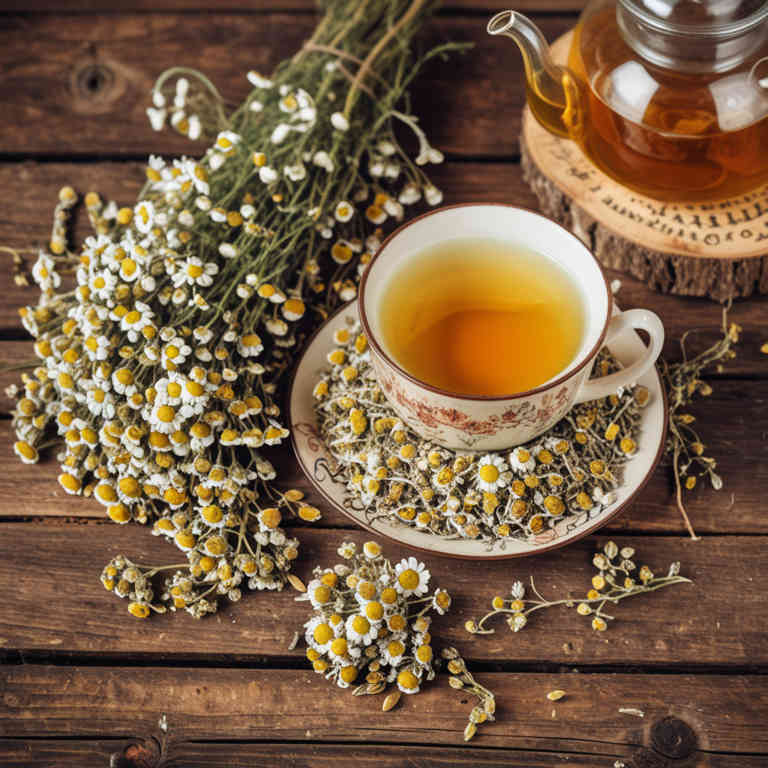
Matricaria chamomilla herbal teas are used to promote relaxation and alleviate mild anxiety due to their calming properties.
They are also commonly consumed to soothe digestive issues such as bloating, gas, and indigestion, thanks to their anti-inflammatory and antispasmodic effects. Chamomile tea is often recommended for its ability to improve sleep quality, making it a popular remedy for insomnia and restlessness. Additionally, it may help reduce inflammation and support skin health when applied topically in the form of compresses or lotions.
These benefits are attributed to the presence of compounds like apigenin, which interact with brain receptors to produce a calming effect.
21. Cuminum cyminum
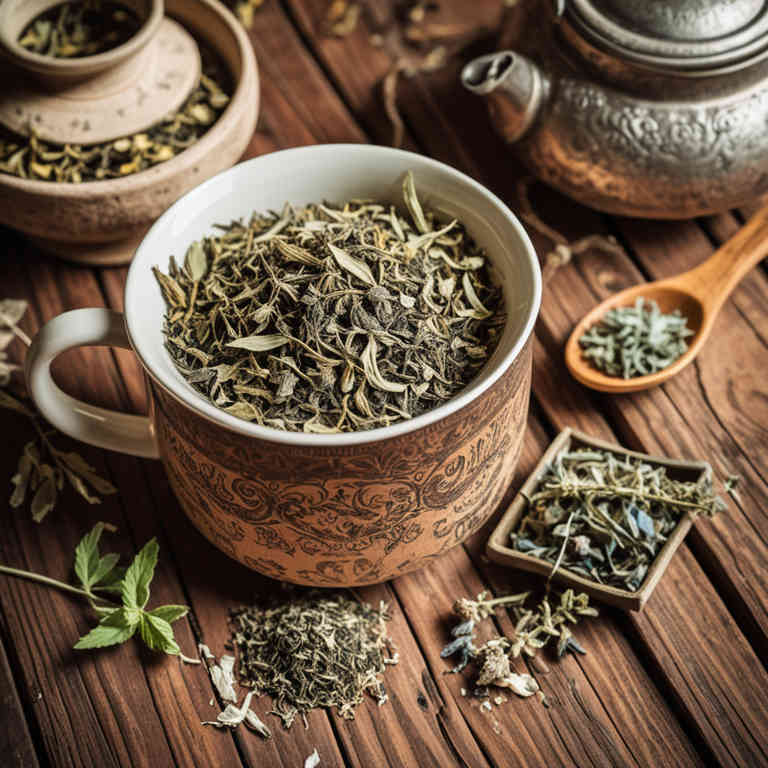
Cuminum cyminum herbal teas are used to support digestive health by stimulating the production of digestive enzymes and relieving symptoms of indigestion, bloating, and gas.
They are also known to help alleviate menstrual cramps due to their antispasmodic properties, making them a popular remedy during menstruation. Additionally, these teas may aid in reducing respiratory congestion by acting as a mild expectorant, helping to loosen mucus and ease coughing. The essential oils in cumin seeds contribute to its antimicrobial properties, which can help in fighting off minor infections and promoting overall immune health.
Overall, cuminum cyminum herbal teas are valued for their versatile therapeutic benefits and are often incorporated into traditional medicine systems for their natural healing properties.
22. Chamomilla recutita
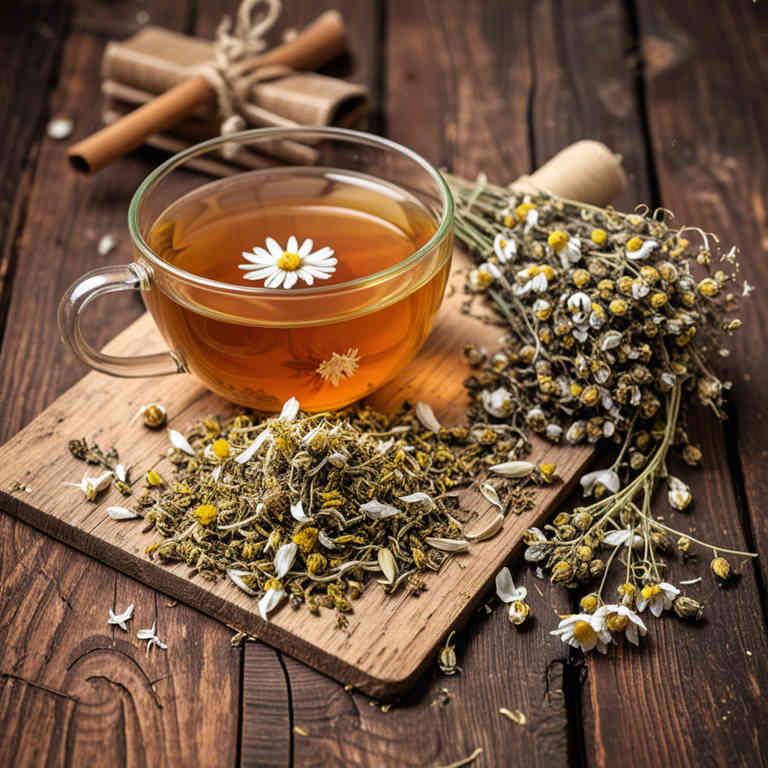
Chamomilla recutita herbal teas are used to promote relaxation and ease anxiety by calming the nervous system.
They are also commonly consumed to aid in digestion and relieve symptoms of gastrointestinal discomfort such as bloating and indigestion. The tea's anti-inflammatory properties make it beneficial for soothing skin irritations and reducing inflammation. It is often used as a natural remedy for insomnia due to its mild sedative effects.
These benefits are attributed to the presence of compounds like apigenin, which have been shown to have calming and healing properties.
23. Vitis vinifera
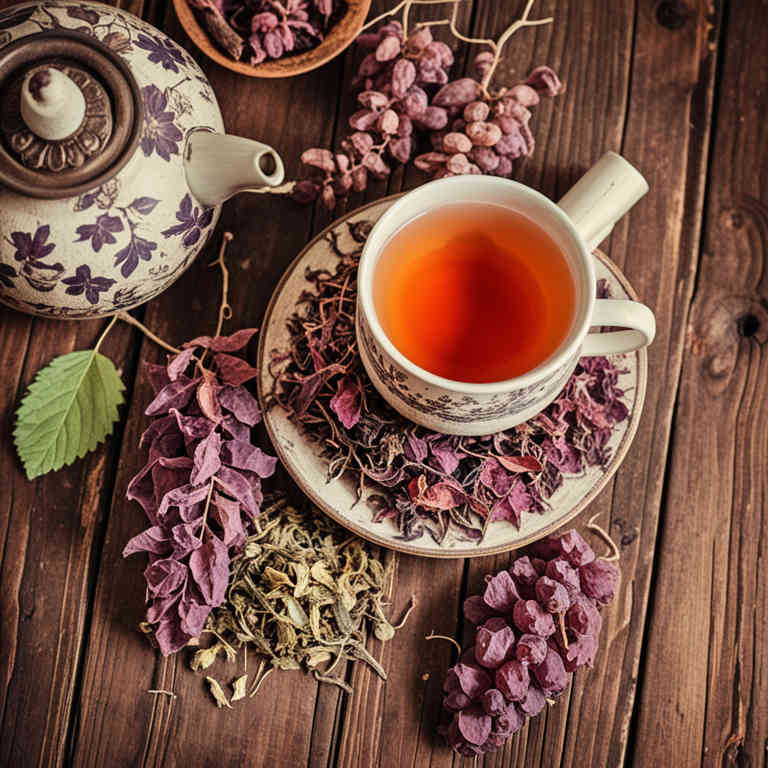
Vitis vinifera herbal teas are used to promote digestive health and alleviate symptoms of indigestion due to their mild laxative and anti-inflammatory properties.
These teas are also beneficial for reducing stress and anxiety, as they contain compounds that may help regulate the nervous system. Additionally, they are often consumed to support cardiovascular health by improving blood flow and reducing cholesterol levels. The antioxidants present in vitis vinifera contribute to overall immune support and may help combat oxidative stress in the body.
Overall, these herbal teas are valued for their natural, holistic approach to wellness and their ability to address a range of mild health concerns.
24. Thymus vulgaris
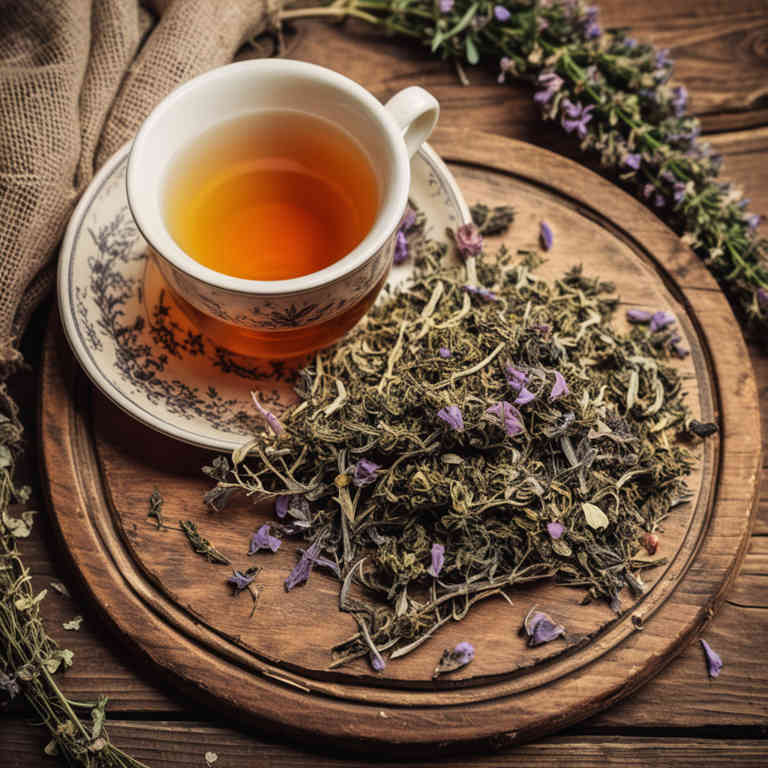
Thymus vulgaris herbal teas are used to support respiratory health by helping to alleviate symptoms of coughs, colds, and bronchitis due to their expectorant and antiseptic properties.
These teas are also known to boost the immune system, making them a popular choice during flu season or when fighting off infections. Additionally, thymus vulgaris contains compounds that may help reduce inflammation, which can be beneficial for individuals suffering from allergies or sinus issues. The calming and soothing effects of the tea can also aid in reducing stress and promoting relaxation, contributing to overall well-being.
Because of these multiple benefits, thymus vulgaris herbal teas are widely used in traditional and modern herbal medicine for their therapeutic and health-enhancing properties.
25. Nigella sativa

Nigella sativa herbal teas are used to support digestive health by promoting healthy gut function and reducing inflammation in the digestive tract.
They are also used to boost the immune system due to their high concentration of bioactive compounds like thymoquinone, which have antimicrobial and antioxidant properties. These teas can help alleviate symptoms of respiratory conditions such as asthma and cough by acting as a natural bronchodilator and expectorant. Additionally, nigella sativa herbal teas are used to manage stress and improve sleep quality because of their calming effects on the nervous system.
Overall, their wide range of therapeutic benefits makes them a valuable natural remedy in traditional and modern wellness practices.
26. Pimpinella anisum
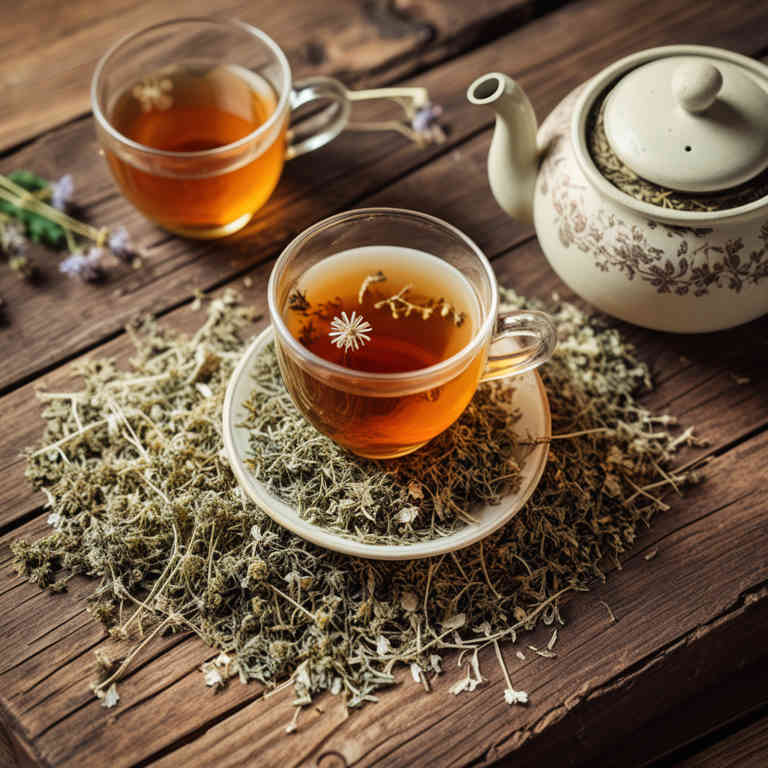
Pimpinella anisum herbal teas are used to support digestive health by easing symptoms of indigestion, bloating, and gas.
They contain compounds that help relax the muscles in the digestive tract, promoting smoother digestion and reducing discomfort. These teas are also valued for their calming properties, which can help alleviate stress and promote relaxation. Additionally, they may aid in respiratory health by relieving mild coughs and congestion due to their expectorant properties.
Because of these benefits, pimpinella anisum herbal teas are a popular natural remedy for those seeking holistic wellness.
27. Cinnamomum zeylanicum
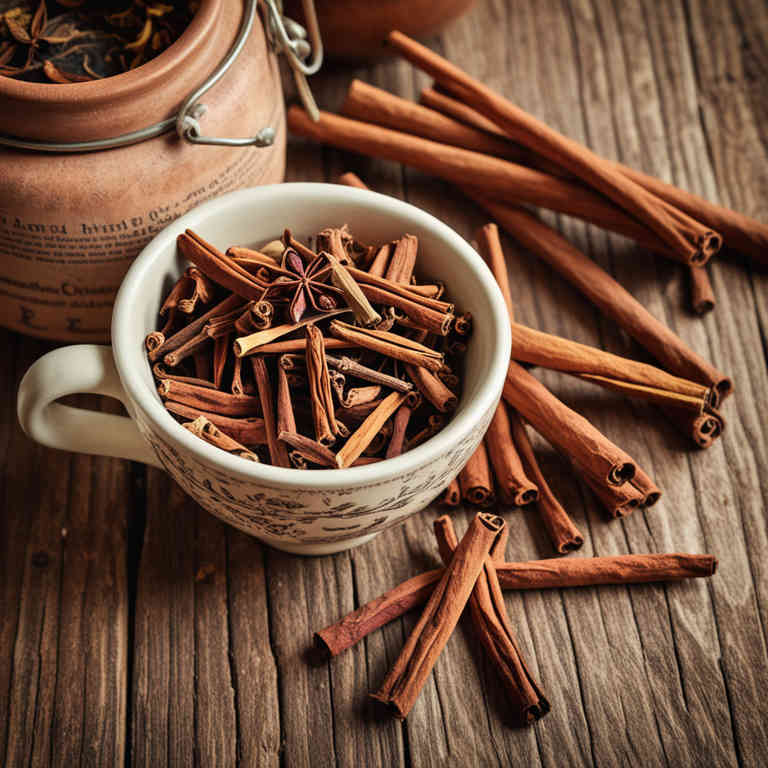
Cinnamomum zeylanicum herbal teas are used to support digestive health by stimulating the production of digestive enzymes and alleviating symptoms of indigestion.
These teas are also known to help reduce inflammation due to their high concentration of antioxidants and anti-inflammatory compounds. Additionally, they are commonly consumed to manage blood sugar levels, as cinnamon has been shown to improve insulin sensitivity. The warming properties of cinnamon make it beneficial for soothing colds and respiratory issues, promoting overall respiratory health.
Overall, cinnamomum zeylanicum herbal teas are valued for their diverse therapeutic benefits, making them a popular choice in both traditional and modern herbal medicine.
28. Equisetum arvense
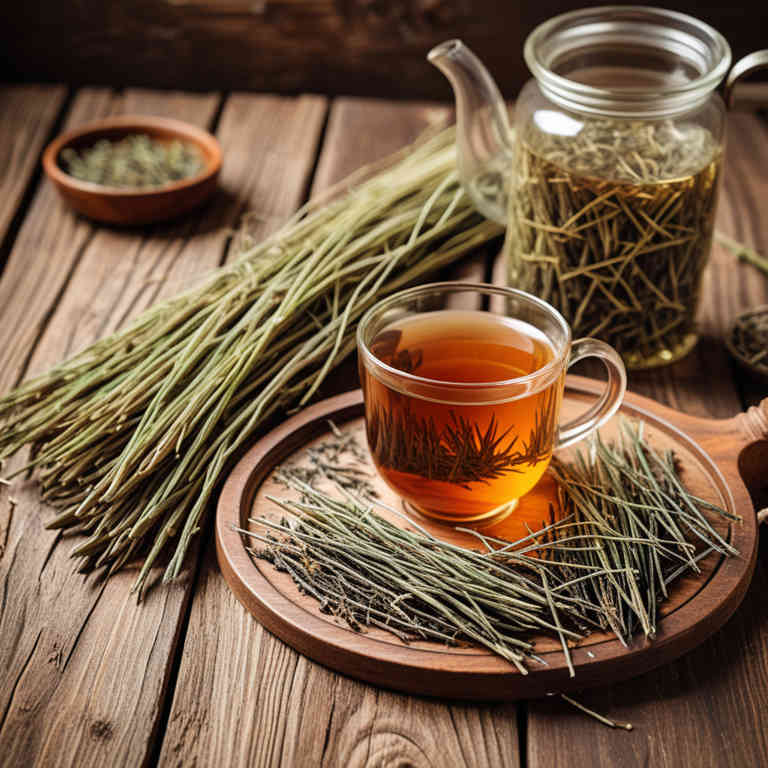
Equisetum arvense herbal teas are used to support digestive health by stimulating the production of digestive enzymes and promoting healthy bowel movements.
They are also valued for their diuretic properties, which can help in reducing water retention and supporting kidney function. Additionally, these teas are believed to have a mild detoxifying effect, aiding in the removal of toxins from the body. Due to their anti-inflammatory properties, they may also help alleviate symptoms of respiratory conditions such as asthma and bronchitis.
Overall, equisetum arvense herbal teas are used to promote overall wellness by addressing various internal imbalances and supporting natural bodily functions.
29. Nymphaea alba

Nymphaea alba herbal teas are used to promote relaxation and alleviate symptoms of stress and anxiety due to their calming properties.
These teas are also known to support digestive health by soothing the gastrointestinal tract and reducing inflammation. The mild sedative effects of nymphaea alba make it beneficial for improving sleep quality and aiding in the treatment of insomnia. Additionally, it is believed to have mild diuretic properties that can help in detoxifying the body and maintaining healthy kidney function.
Overall, nymphaea alba herbal teas are valued for their natural therapeutic benefits, making them a popular choice in traditional and modern herbal medicine.
30. Melissa officinalis
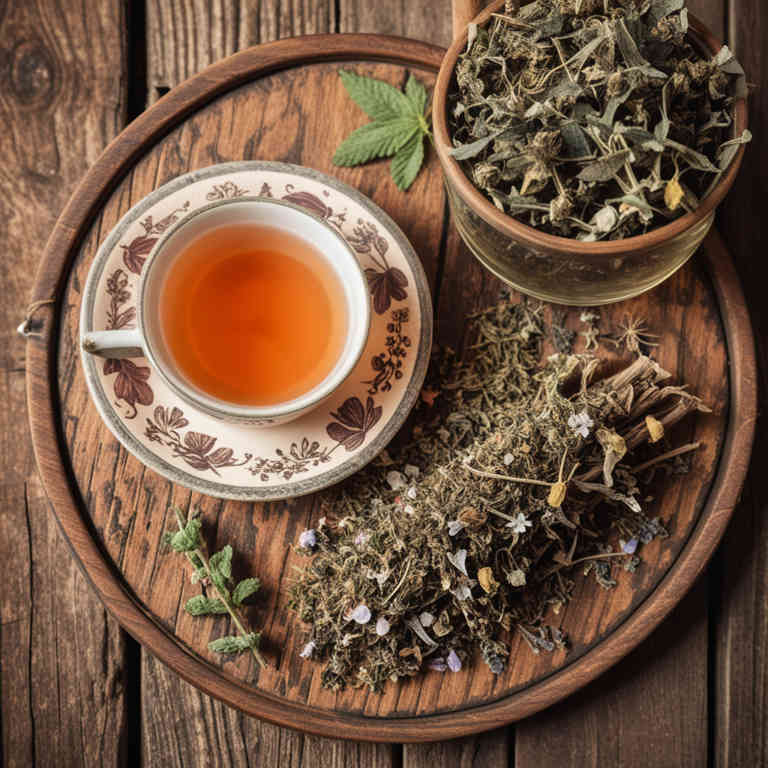
Melissa officinalis herbal teas are used to promote relaxation and reduce stress due to their calming properties.
They are often consumed to ease symptoms of anxiety and insomnia by helping to balance mood and improve sleep quality. The tea also supports digestive health by soothing the gastrointestinal tract and aiding in the relief of bloating and indigestion. Additionally, melissa officinalis is valued for its potential to enhance mental clarity and cognitive function, making it a popular choice for those seeking natural remedies for mental fatigue.
These benefits stem from the plant's rich content of antioxidants, flavonoids, and essential oils, which contribute to its therapeutic effects.
31. Ginkgo biloba
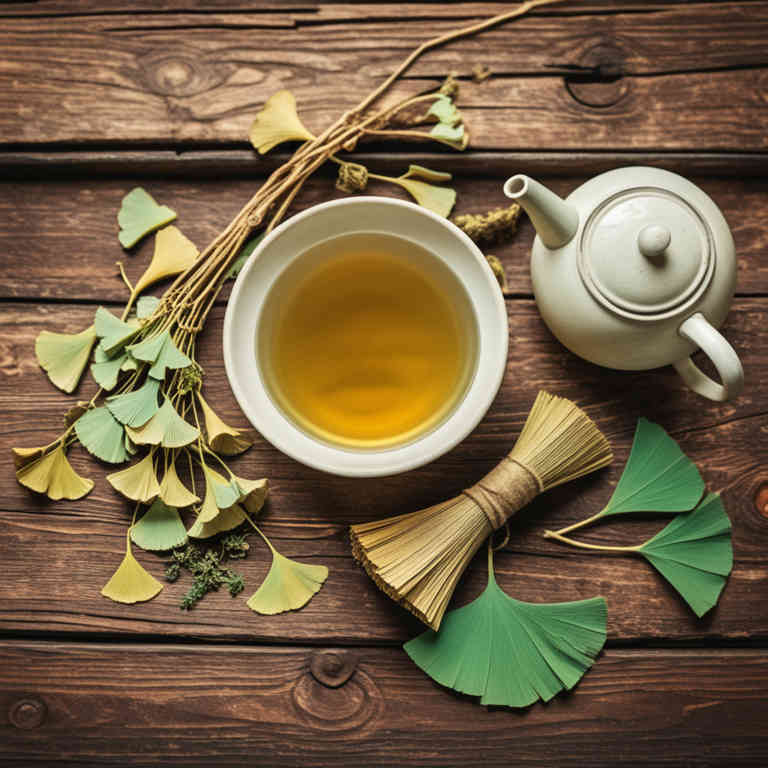
Ginkgo biloba herbal teas are used to enhance cognitive function and improve memory, as they contain antioxidants and flavonoids that may support brain health.
These teas are also popular for their potential to promote circulation by dilating blood vessels and increasing blood flow, which can benefit individuals with circulatory issues. Additionally, ginkgo biloba herbal teas are often consumed to reduce stress and anxiety, thanks to their calming properties and ability to support the nervous system. The herb's long history in traditional medicine further supports its use in treating ailments such as headaches and respiratory conditions.
Overall, the combination of these benefits makes ginkgo biloba herbal teas a versatile and widely appreciated natural remedy.
32. Sabadilla tinctura

Sabadilla tinctura herbal teas are used to alleviate symptoms of respiratory conditions such as coughs, bronchitis, and asthma due to their expectorant and anti-inflammatory properties.
These teas help to loosen mucus in the airways, making it easier to expel and reducing congestion. They are also believed to have mild sedative effects, which can aid in promoting better sleep during periods of illness. The active compounds in sabadilla, such as alkaloids, contribute to its ability to soothe irritated throats and reduce inflammation.
However, it is important to use these teas under the guidance of a healthcare professional, as they may interact with certain medications or have side effects in some individuals.
33. Sambucus nigra
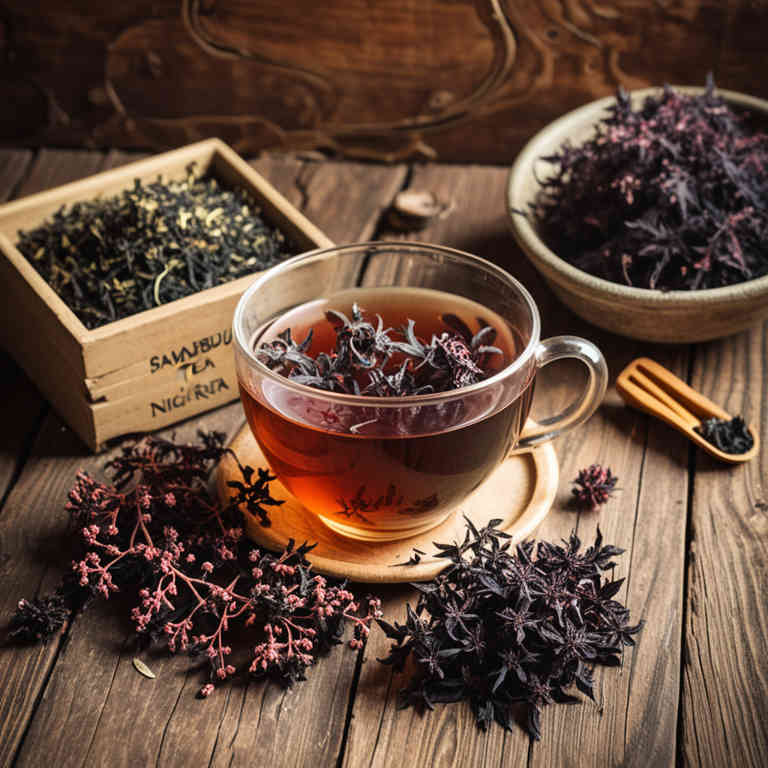
Sambucus nigra herbal teas are used to support the immune system by providing antioxidants and anti-inflammatory compounds that help fight off infections.
They are also commonly consumed to alleviate symptoms of colds and flu due to their mild antiviral properties. Additionally, these teas can aid in digestion by promoting healthy gut function and reducing bloating. Some traditional uses suggest that sambucus nigra may help lower fever and reduce inflammation in the respiratory tract.
Overall, the combination of its soothing effects and potential health benefits makes it a popular choice for natural remedies in various wellness practices.
34. Prunus domestica

Prunus domestica herbal teas are used to support digestive health by soothing the gastrointestinal tract and alleviating symptoms of indigestion, bloating, and mild stomach discomfort.
These teas are also valued for their calming effects, as they can help reduce stress and promote relaxation, making them a popular choice for evening consumption. The natural compounds in prunus domestica, such as antioxidants and flavonoids, contribute to its anti-inflammatory properties, which may aid in reducing inflammation in the body. Additionally, these teas are believed to enhance immune function due to their rich content of vitamins and minerals.
Overall, prunus domestica herbal teas are a versatile and natural remedy that offers a range of health benefits, making them a valuable addition to a wellness routine.
35. Aloe barbadensis
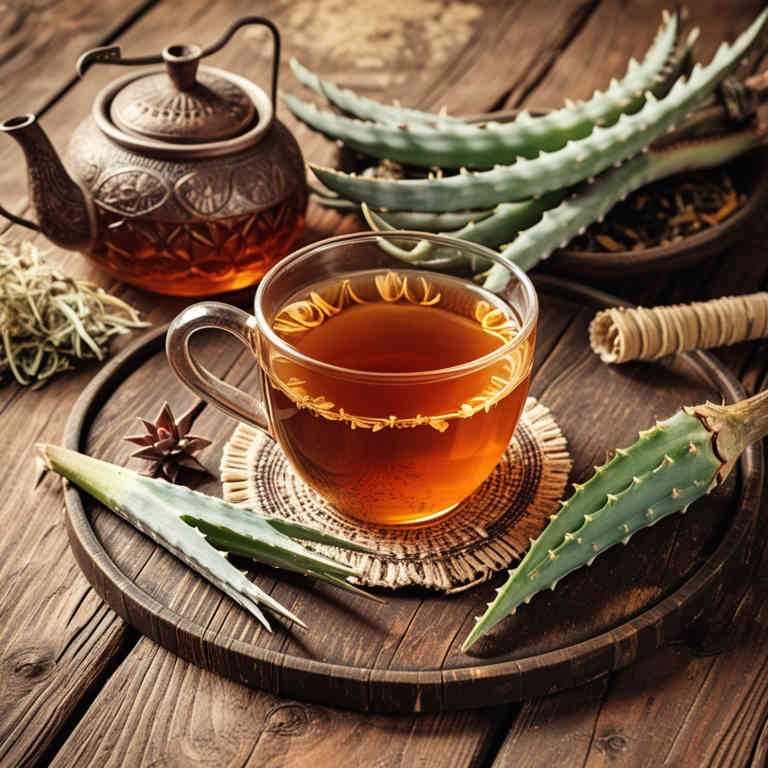
Aloe barbadensis herbal teas are used to promote digestive health by soothing the gastrointestinal tract and reducing inflammation.
They are also beneficial for skin conditions due to their anti-inflammatory and antimicrobial properties, which can help with acne, eczema, and psoriasis. Additionally, these teas may support immune function by providing essential nutrients and antioxidants that enhance the body's natural defenses. Aloe barbadensis herbal teas are often consumed to relieve mild digestive issues such as bloating, constipation, and indigestion.
Their natural healing properties make them a popular choice for those seeking natural remedies for both internal and external wellness.
36. Cymbopogon citratus
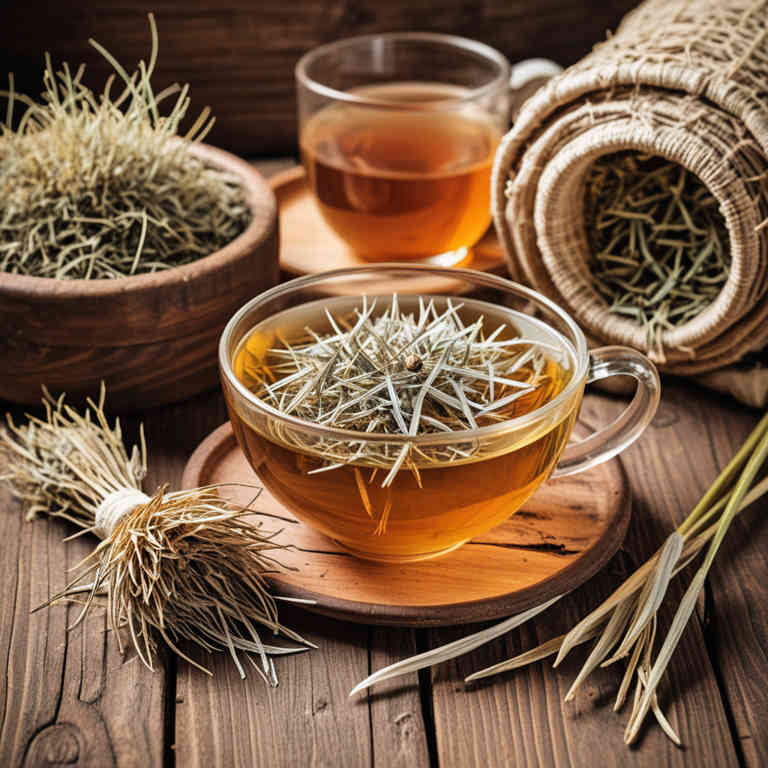
Cymbopogon citratus herbal teas are used to promote relaxation and reduce stress due to their calming properties.
These teas are often consumed to alleviate symptoms of anxiety and insomnia, as they contain compounds like linalool and geraniol that have soothing effects on the nervous system. Additionally, they are used to support digestive health by helping to ease nausea and bloating. The essential oils in cymbopogon citratus also possess antimicrobial properties, making these teas beneficial for boosting the immune system.
Overall, their versatility and natural therapeutic benefits make cymbopogon citratus herbal teas a popular choice for holistic wellness.
37. Pueraria lobata
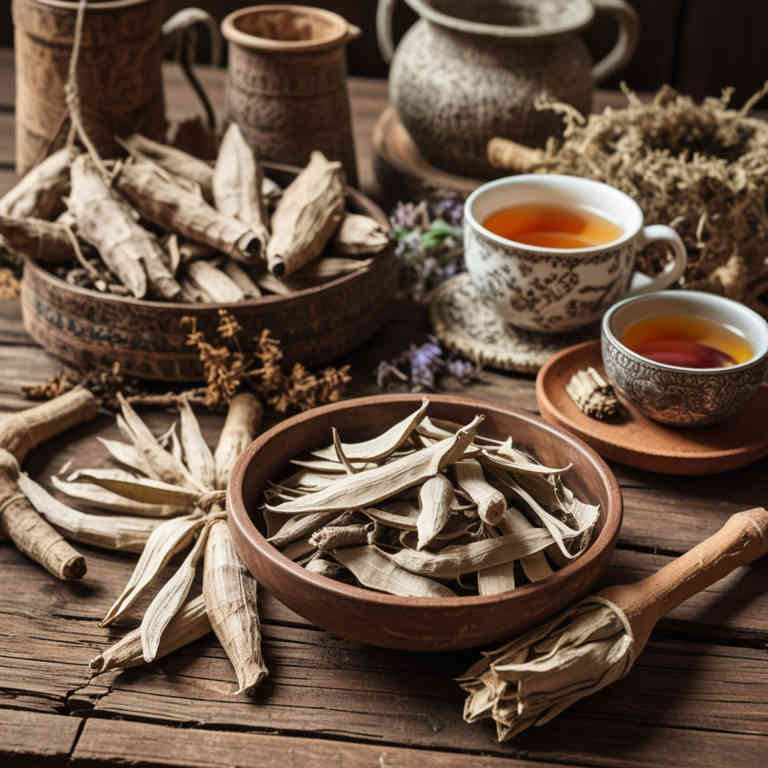
Pueraria lobata herbal teas are used to support weight management and metabolic health due to their high concentration of isoflavones, which may help regulate fat metabolism and reduce appetite.
These teas are also valued for their potential to alleviate menopausal symptoms, such as hot flashes and mood swings, thanks to their phytoestrogen content that mimics estrogen in the body. Additionally, pueraria lobata herbal teas are believed to promote skin health by improving circulation and reducing inflammation, contributing to a more youthful appearance. The tea's ability to enhance insulin sensitivity makes it a popular choice for individuals managing diabetes or prediabetes.
Overall, the diverse bioactive compounds in pueraria lobata make it a versatile herbal remedy with multiple health benefits.
38. Pelargonium graveolens

Pelargonium graveolens herbal teas are used to support digestive health by alleviating symptoms of indigestion, bloating, and gas.
These teas are also valued for their calming properties, which can help reduce stress and promote relaxation. The essential oils in pelargonium graveolens have antimicrobial effects, making the tea beneficial for treating mild cases of nausea and food poisoning. Additionally, it is often consumed to ease menstrual discomfort due to its mild antispasmodic properties.
Overall, pelargonium graveolens herbal teas are a versatile natural remedy that addresses a range of common health concerns.
39. Petroselinum crispum

Petroselinum crispum herbal teas are used to support digestive health by stimulating the production of digestive enzymes and promoting the elimination of toxins from the body.
They are also known to help alleviate symptoms of bloating, gas, and indigestion due to their mild carminative properties. Additionally, these teas may contribute to reducing stress and anxiety by calming the nervous system, thanks to the presence of compounds like apigenin. The fresh, herbaceous aroma of parsley tea can also enhance overall well-being and provide a refreshing, cleansing effect on the palate.
Due to their natural and gentle nature, petroselinum crispum herbal teas are a popular choice for those seeking natural remedies for mild digestive discomfort and stress relief.
40. Valeriana officinalis
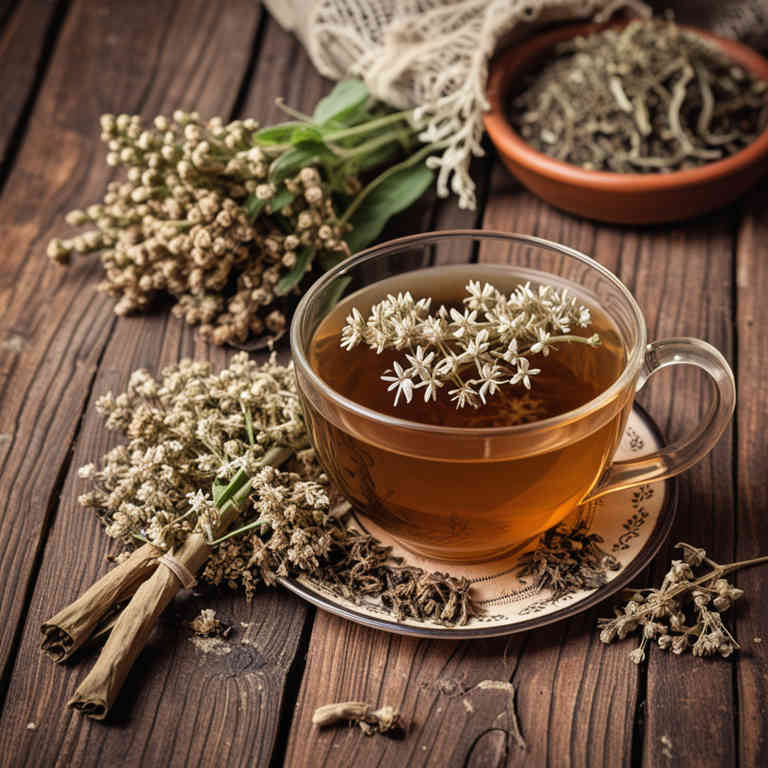
Valeriana officinalis herbal teas are used to promote relaxation and improve sleep quality by calming the nervous system.
These teas contain compounds like valerenic acid, which may help reduce anxiety and stress levels. They are commonly consumed by individuals experiencing insomnia or restlessness due to their soothing effects. The mild sedative properties of valerian root make it a popular natural remedy for mild sleep disorders.
Additionally, valeriana officinalis herbal teas may support overall mental well-being by reducing feelings of tension and irritability.
41. Leonurus cardiaca
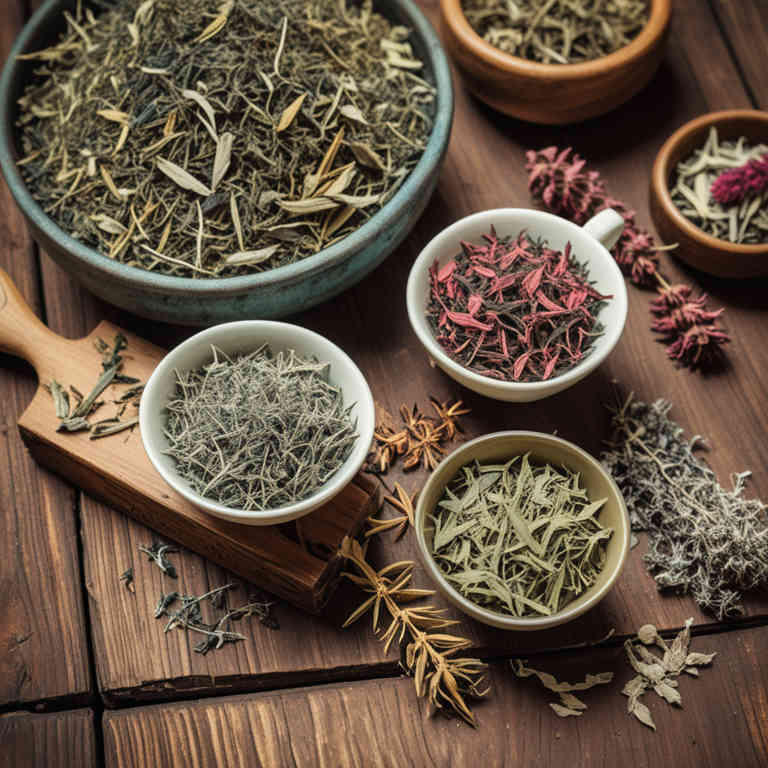
Leonurus cardiaca herbal teas are used to support cardiovascular health and promote relaxation.
This herb, commonly known as heart herb or red clover, contains compounds that may help lower blood pressure and improve circulation. Its mild sedative properties make it beneficial for reducing stress and anxiety, which in turn can positively affect heart function. Traditionally, it has been used to treat heart palpitations and insomnia, making it a valuable remedy for those seeking natural support for their cardiovascular system.
The combination of its calming effects and potential cardiovascular benefits makes leonurus cardiaca a popular choice in herbal medicine.
42. Sanguisorba officinalis

Sanguisorba officinalis herbal teas are used to support digestive health by promoting regular bowel movements and soothing gastrointestinal discomfort.
These teas are also valued for their mild diuretic properties, which can aid in reducing fluid retention and supporting kidney function. Additionally, they are often consumed to alleviate symptoms of mild respiratory conditions, such as coughs and sore throats, due to their anti-inflammatory and antioxidant benefits. The plant’s high content of mucilage makes it effective in coating and protecting the mucous membranes of the throat and digestive tract.
Overall, sanguisorba officinalis herbal teas are appreciated for their gentle yet effective contributions to overall wellness and natural healing.
43. Artemisia absinthium
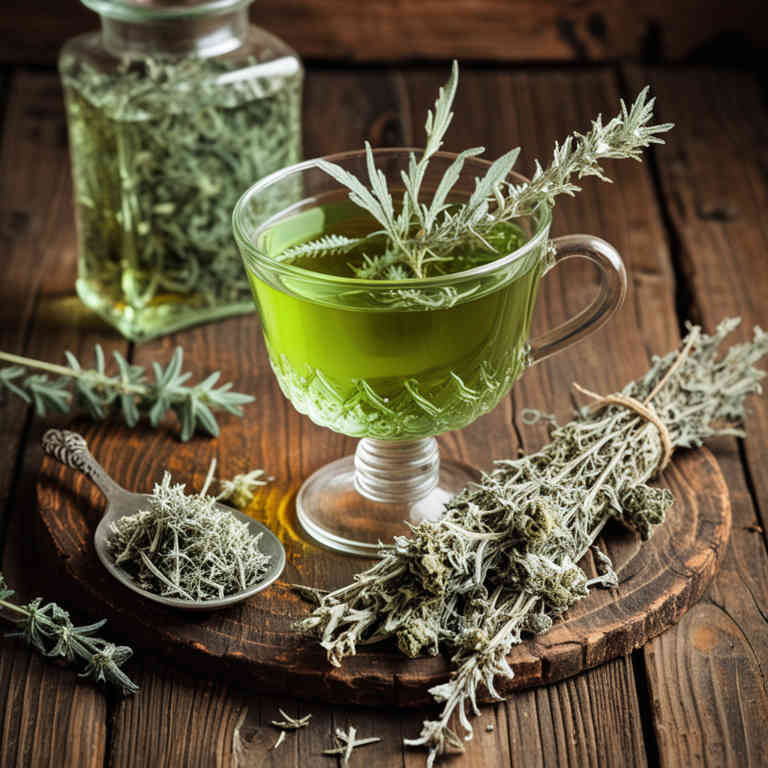
Artemisia absinthium herbal teas are used to support digestive health by stimulating the production of digestive enzymes and bile, which can aid in the breakdown of food and the relief of digestive discomfort.
These teas are also valued for their potential to alleviate symptoms of insomnia due to their mild sedative properties, promoting relaxation and better sleep quality. Additionally, artemisia absinthium is believed to have antimicrobial properties that may help in fighting off certain bacterial infections. Its use in traditional medicine also extends to treating skin conditions and reducing inflammation, making it a versatile herb in holistic health practices.
Overall, the combination of its digestive, calming, and antimicrobial effects makes artemisia absinthium a valuable component in herbal teas for promoting overall wellness.
44. Rhodiola rosea
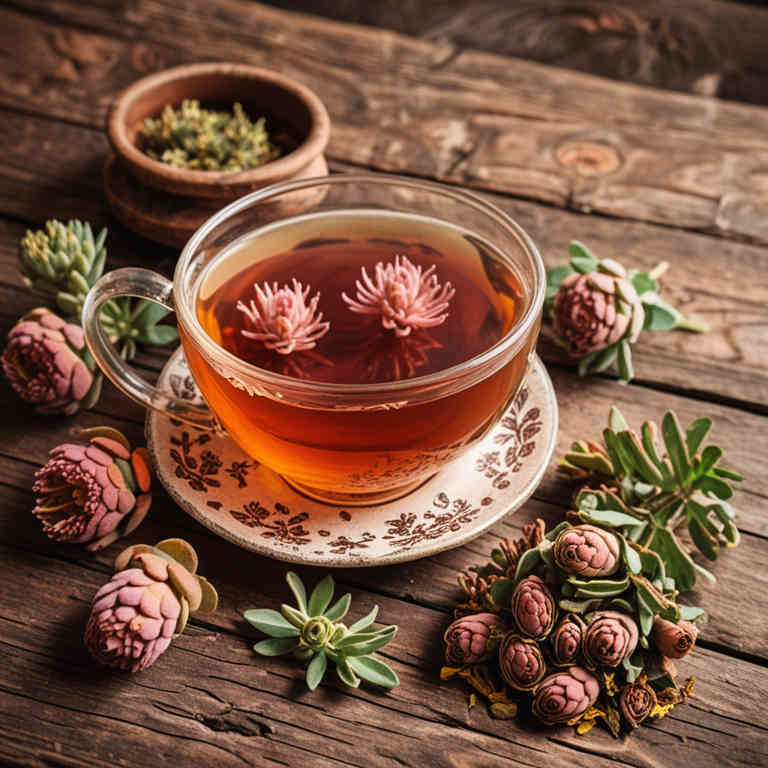
Rhodiola rosea herbal teas are used to enhance physical and mental performance by supporting the body's ability to cope with stress.
These teas contain adaptogenic compounds that help regulate the body's stress response, making them beneficial for individuals experiencing chronic fatigue or high stress levels. They are also known to improve cognitive function, concentration, and mood, making them popular among students and professionals. Additionally, rhodiola rosea herbal teas may support energy levels and reduce feelings of exhaustion, promoting overall well-being.
Due to their natural properties, they are often recommended as a complementary therapy for enhancing vitality and resilience.
45. Sanguinaria canadensis
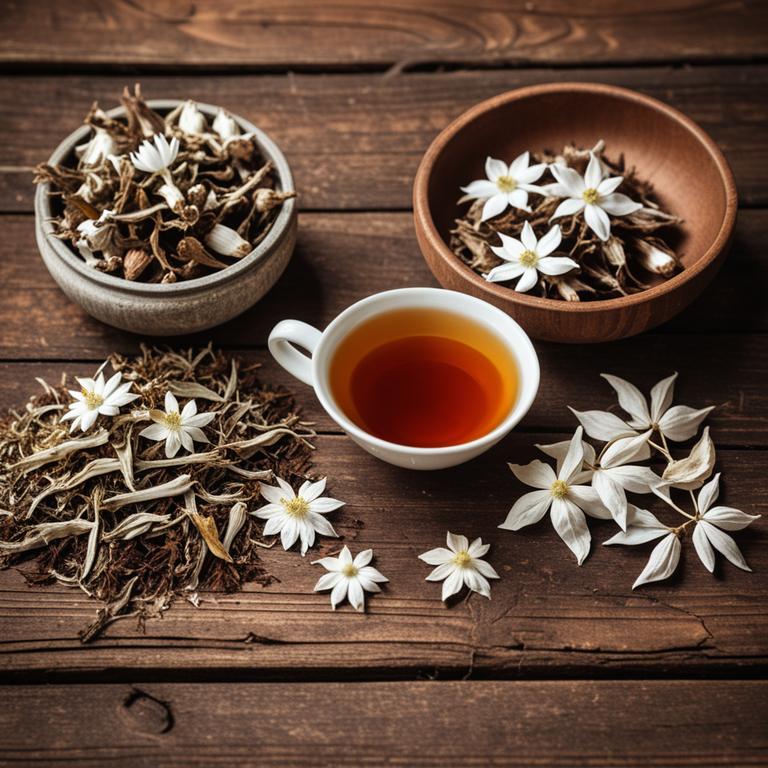
Sanguinaria canadensis herbal teas are used to support digestive health due to their anti-inflammatory and antimicrobial properties.
These teas may help alleviate symptoms of indigestion, bloating, and nausea by soothing the gastrointestinal tract. The plant contains compounds that can stimulate the production of digestive enzymes, enhancing nutrient absorption. Additionally, sanguinaria canadensis is believed to have mild sedative effects, which can aid in reducing stress-related digestive issues.
However, it is important to use these teas with caution, as they can be toxic in large doses and may interact with certain medications.
46. Sutherlandia frutescens

Sutherlandia frutescens herbal teas are used to support immune function and promote overall wellness.
They are often consumed to help the body cope with stress and fatigue, making them popular among individuals seeking natural remedies for energy enhancement. This herb is also believed to have anti-inflammatory properties, which may aid in reducing symptoms associated with chronic conditions. Its traditional use in African medicine highlights its potential role in supporting the body's natural healing processes.
Due to these benefits, sutherlandia frutescens herbal teas are increasingly being explored for their therapeutic value in modern holistic health practices.
47. Panax ginseng
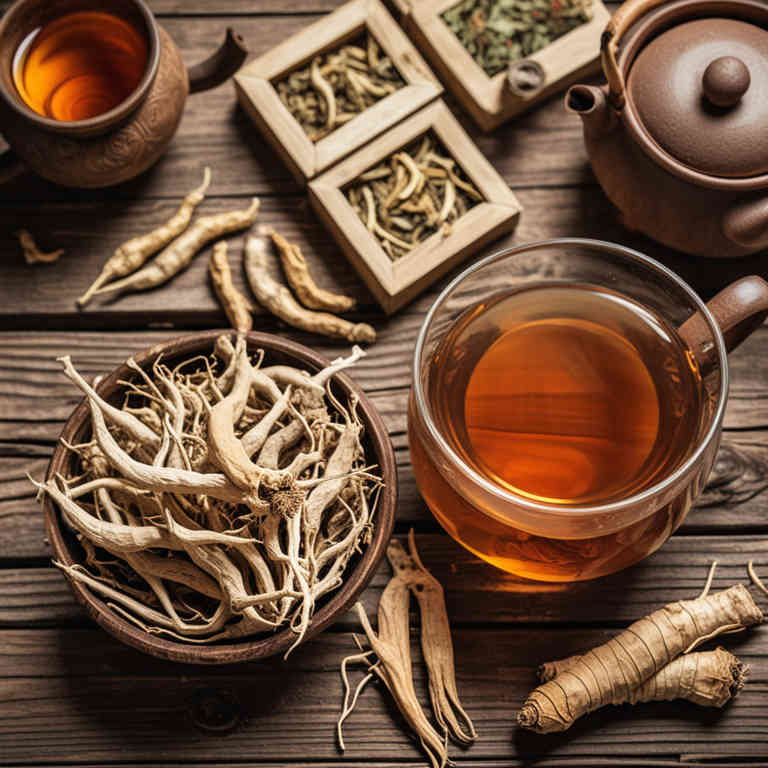
Panax ginseng herbal teas are used to enhance energy levels and improve mental clarity by stimulating the central nervous system.
These teas are also known to support immune function, helping the body resist illness and recover more quickly from fatigue. Additionally, they may aid in reducing stress and anxiety by promoting a sense of calm and balance within the body. The adaptogenic properties of panax ginseng make it beneficial for managing physical and emotional stress.
As a result, panax ginseng herbal teas are widely consumed for their holistic health benefits and natural vitality-boosting effects.
48. Satureja hortensis
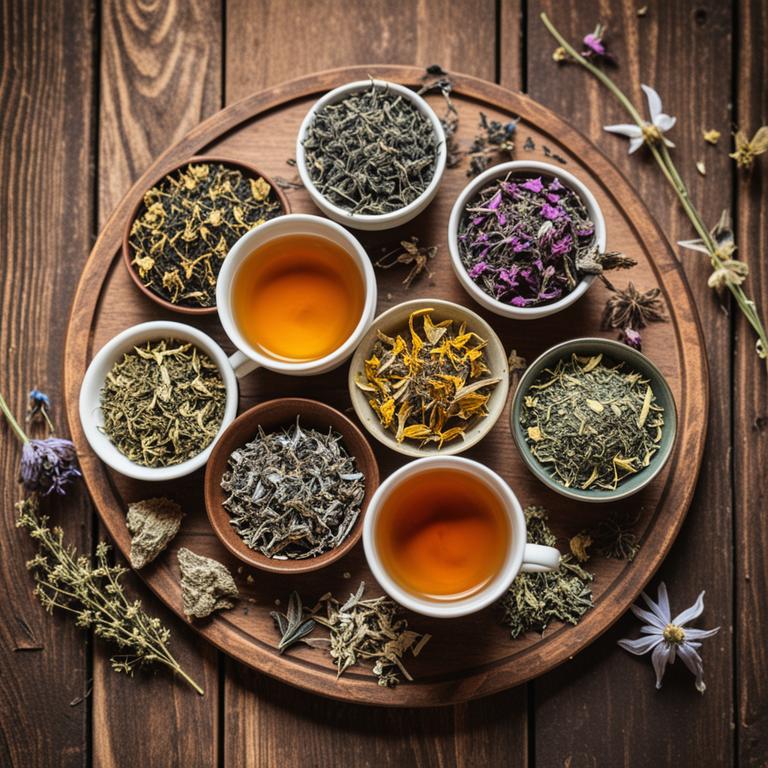
Satureja hortensis herbal teas are used to support digestive health by soothing the stomach and relieving symptoms of indigestion and bloating.
They are also valued for their antimicrobial properties, which can help in reducing harmful bacteria in the gut and promoting overall gut wellness. Additionally, these teas are often consumed to alleviate stress and anxiety due to their calming and mild sedative effects. The plant's essential oils contribute to its ability to enhance mental clarity and reduce fatigue, making it a popular choice for those seeking natural energy support.
Overall, satureja hortensis herbal teas offer a range of health benefits that make them a valuable addition to a holistic wellness routine.
49. Eucalyptus globulus
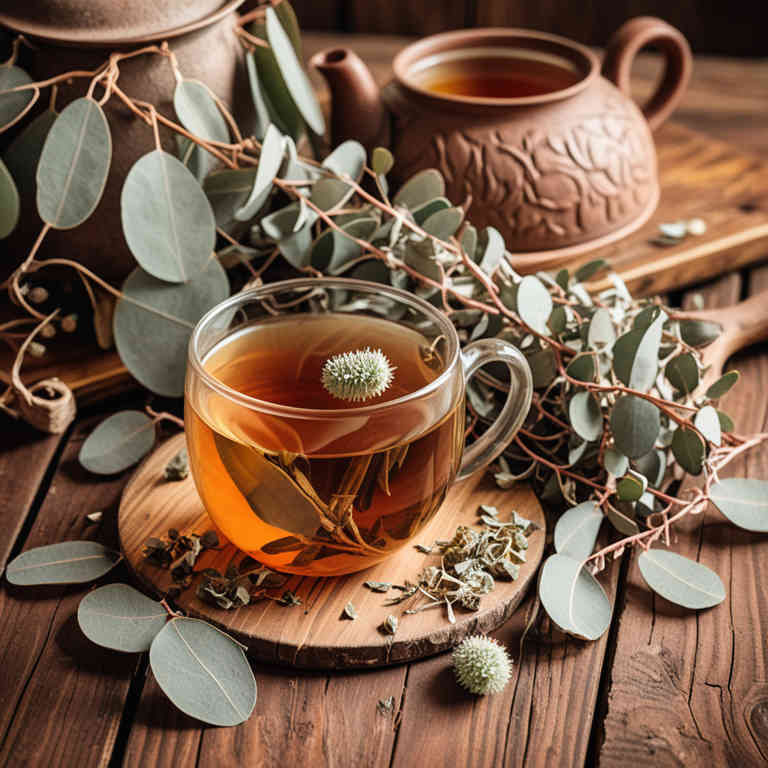
Eucalyptus globulus herbal teas are used to support respiratory health by helping to relieve symptoms of colds, coughs, and congestion due to their expectorant and anti-inflammatory properties.
These teas can also aid in reducing fever and promoting sweating, which is beneficial during mild illnesses. Additionally, they are known to have a calming effect, making them useful for easing stress and improving mental clarity. The essential oils in eucalyptus globulus, such as eucalyptol, contribute to its decongestant and antimicrobial qualities.
Overall, these teas are valued for their natural therapeutic benefits and are often incorporated into holistic health practices.
50. Allium sativum
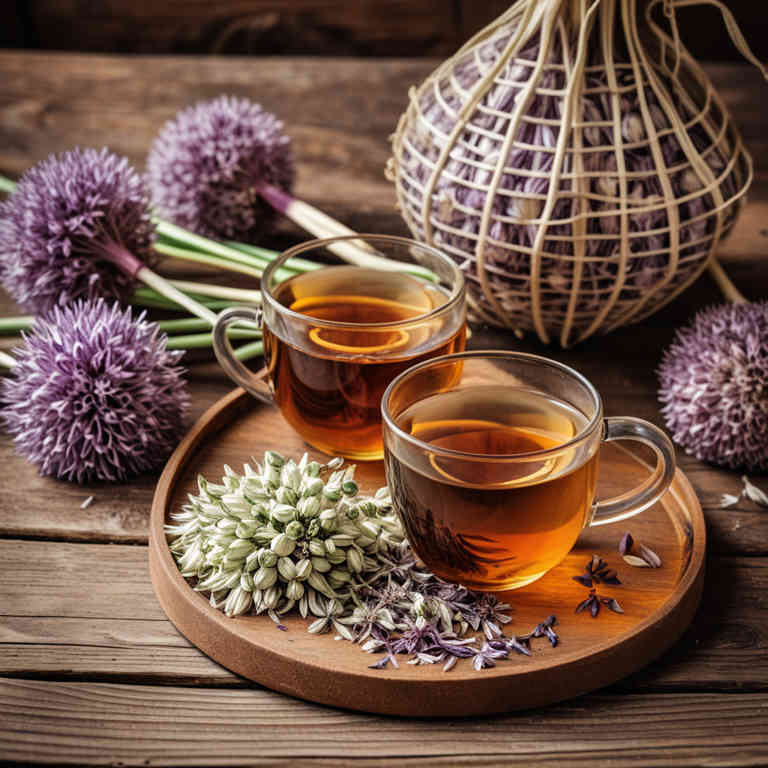
Allium sativum herbal teas are used to support digestive health by stimulating the production of gastric juices and aiding in the digestion of food.
These teas can also help alleviate symptoms of bloating and indigestion due to their natural antispasmodic properties. Additionally, allium sativum herbal teas are known to have antimicrobial effects, which can help in reducing the risk of infections in the gastrointestinal tract. They are also believed to possess anti-inflammatory properties that may contribute to overall gut health and immune support.
Because of these benefits, allium sativum herbal teas are increasingly popular as a natural remedy for various digestive and immune-related concerns.
51. Lepidium meyenii
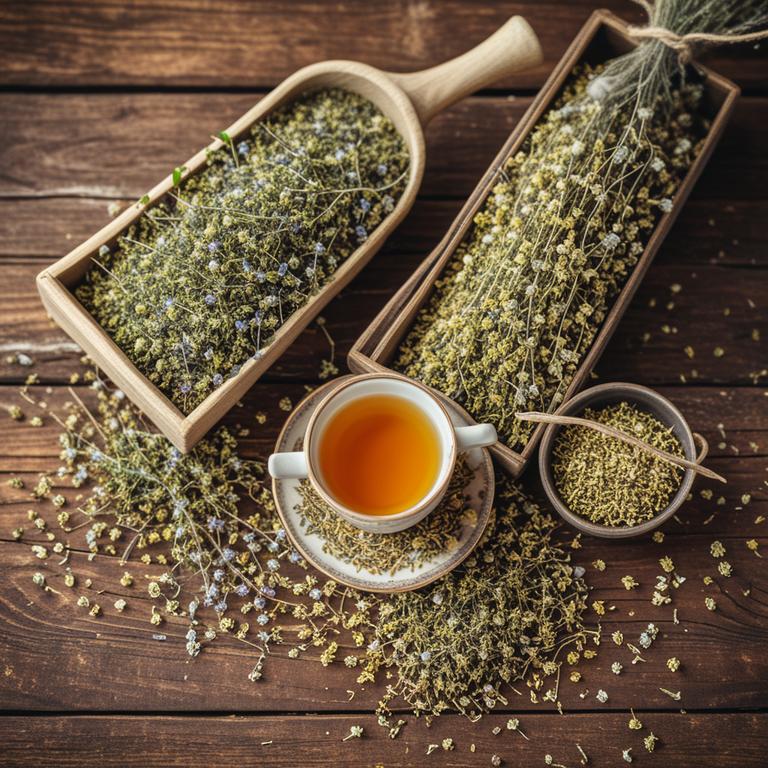
Lepidium meyenii herbal teas are used to support digestive health and promote overall well-being.
This herb, commonly known as maca, is believed to enhance energy levels and improve mental clarity due to its rich nutrient profile. It is also utilized to alleviate symptoms of fatigue and boost stamina, making it popular among athletes and individuals with high physical demands. Additionally, lepidium meyenii herbal teas may help regulate hormonal balance and improve mood, thanks to its adaptogenic properties.
These benefits make it a valuable natural remedy for those seeking holistic health support.
52. Piper methysticum
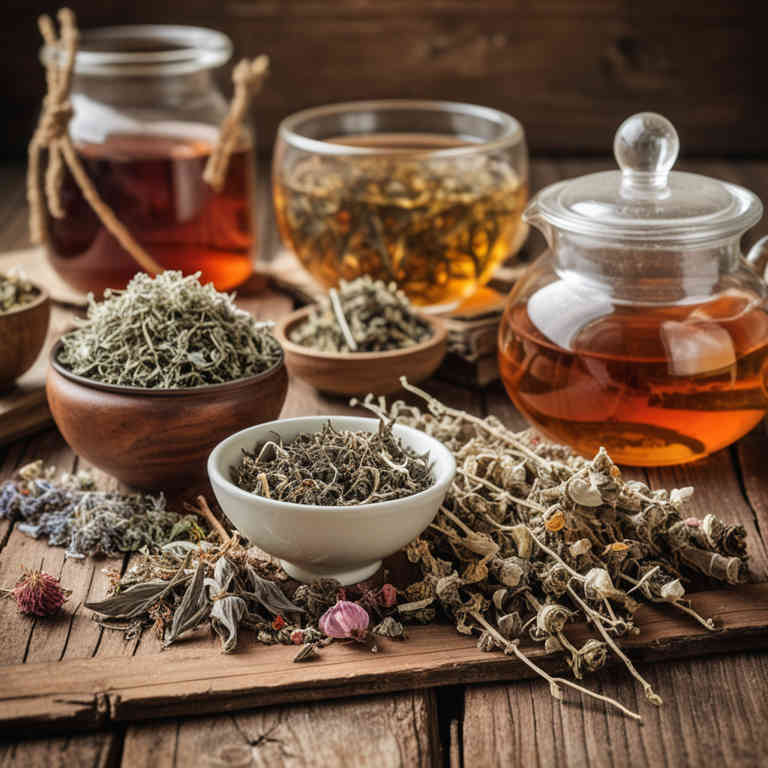
Piper methysticum herbal teas are used to promote relaxation and reduce stress by inducing a calming effect on the mind and body.
These teas, derived from the kava plant, are traditionally consumed in Pacific Island cultures for their soothing properties. They are also used to alleviate symptoms of anxiety and insomnia due to their mild sedative effects. The active compounds in kava, such as kavalactones, contribute to its ability to ease tension and enhance mood.
Because of these benefits, piper methysticum herbal teas are increasingly popular in modern wellness practices as a natural alternative to pharmaceutical sedatives.
53. Paeonia suffruticosa
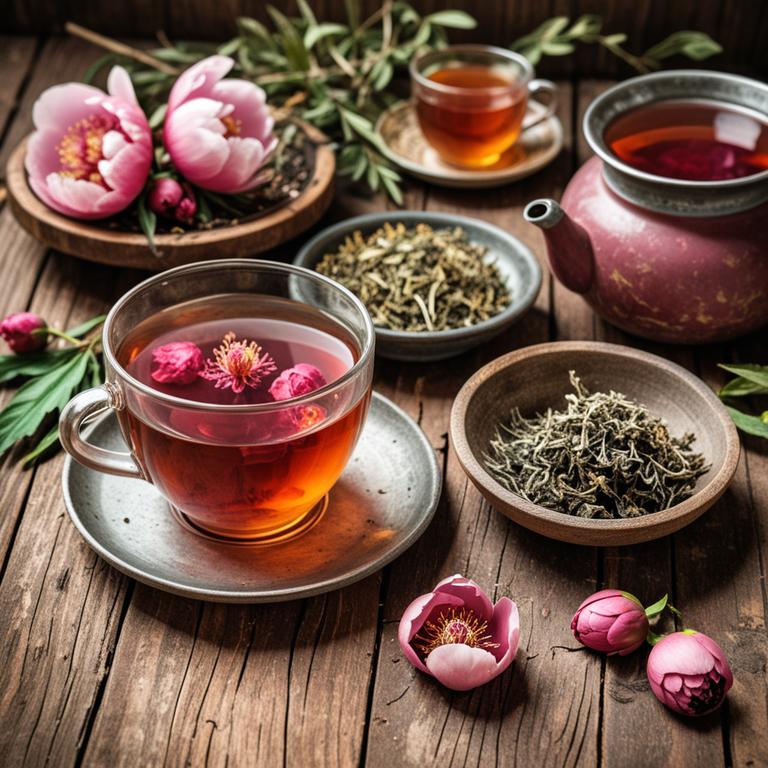
Paeonia suffruticosa herbal teas are used to promote cardiovascular health by helping to lower blood pressure and improve circulation.
These teas are also valued for their calming effects, making them beneficial for reducing stress and anxiety. The active compounds in paeonia suffruticosa, such as paeoniflorin, contribute to its anti-inflammatory and antioxidant properties. Regular consumption of this herbal tea may support immune function and aid in the management of chronic inflammation.
Due to its traditional use in Chinese medicine, paeonia suffruticosa herbal teas are increasingly recognized for their potential therapeutic benefits in modern wellness practices.
54. Nelumbo nucifera

Nelumbo nucifera herbal teas are used to promote relaxation and improve mental clarity by calming the nervous system.
They are also beneficial for digestive health, as they help ease gastrointestinal discomfort and support healthy digestion. The tea is known to have antioxidant properties that contribute to overall immune support and cellular health. Additionally, it is traditionally used in Ayurvedic practices to balance the body's energies and reduce stress.
These benefits make nelumbo nucifera a valuable natural remedy for both physical and emotional well-being.
55. Artemisia vulgaris

Artemisia vulgaris herbal teas are used to support digestive health by stimulating appetite and aiding in the relief of indigestion and bloating.
They are also known to help manage symptoms of menopause, such as hot flashes and mood swings, due to their mild estrogenic properties. Additionally, these teas are traditionally used to alleviate respiratory issues like coughs and colds because of their expectorant and antimicrobial qualities. The plant's high content of volatile oils and flavonoids contributes to its anti-inflammatory and antioxidant effects, making it beneficial for overall immune support.
Because of these diverse therapeutic properties, artemisia vulgaris herbal teas are valued in both traditional and modern herbal medicine practices.
56. Boswellia serrata
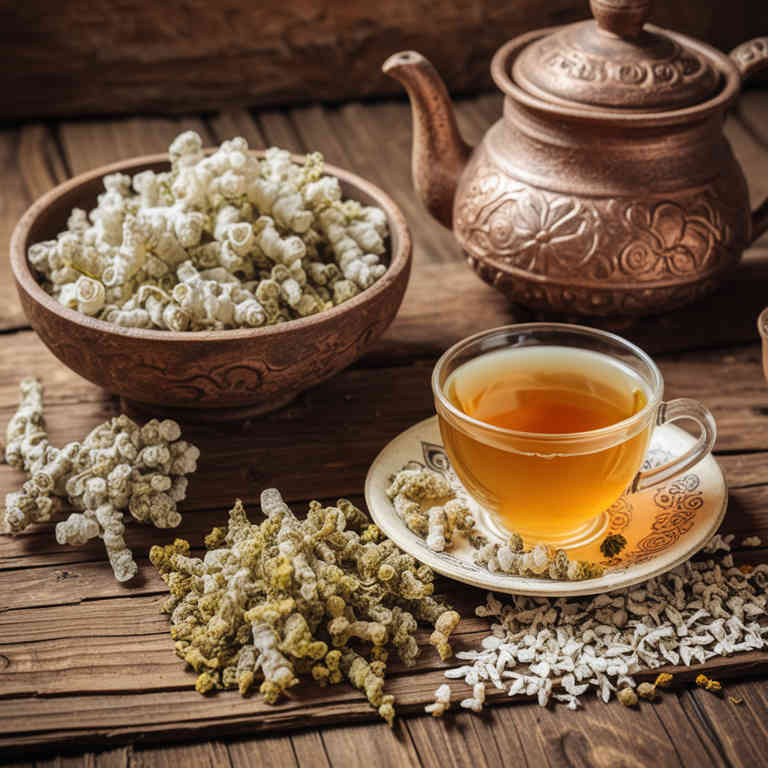
Boswellia serrata herbal teas are used to support joint health and reduce inflammation due to their high concentration of anti-inflammatory compounds, such as boswellic acids.
These teas are commonly consumed to alleviate symptoms of arthritis and other inflammatory conditions by inhibiting the production of inflammatory enzymes in the body. Additionally, boswellia serrata is believed to enhance immune function and promote overall wellness, making it a popular choice for those seeking natural remedies. The soothing properties of the tea also make it beneficial for calming the nervous system and improving digestive health.
Because of its natural origins and minimal side effects, boswellia serrata herbal tea is increasingly favored as a complementary therapy in holistic health practices.
57. Nepeta cataria

Nepeta cataria herbal teas are used to promote relaxation and alleviate symptoms of anxiety and stress.
This herb, commonly known as catnip, contains compounds like nepetalactone that have calming effects on the nervous system. It is often consumed as a natural remedy to improve sleep quality and ease tension. The mild, herbaceous flavor makes it a popular choice for those seeking a soothing beverage.
Additionally, nepeta cataria herbal teas are believed to support digestion and reduce nausea, making them a versatile option for overall wellness.
58. Vaccinium myrtillus
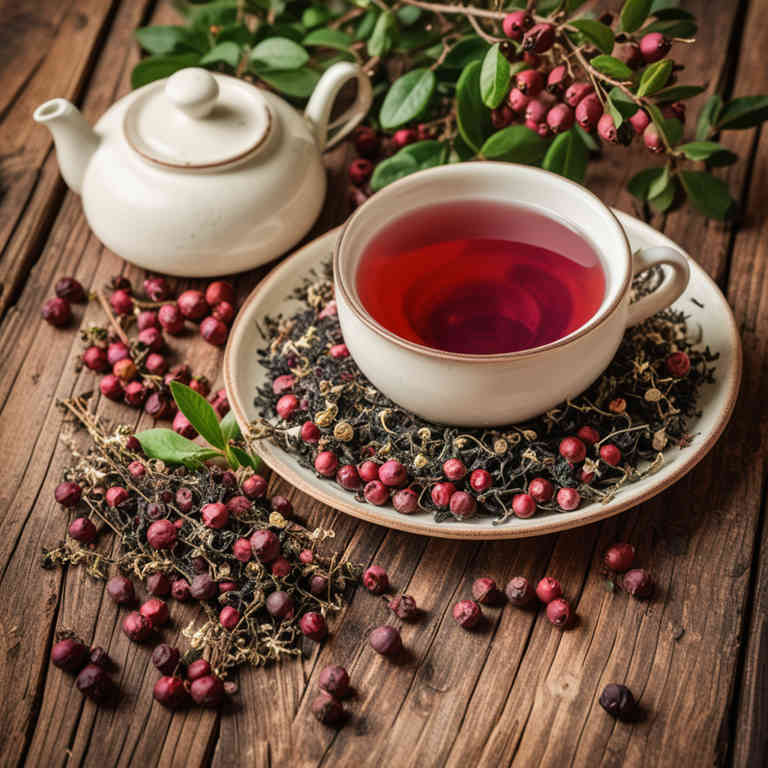
Vaccinium myrtillus herbal teas are used to support digestive health due to their high content of antioxidants and anti-inflammatory compounds.
These teas can help soothe gastrointestinal discomfort and promote healthy digestion by reducing inflammation in the stomach and intestines. They are also known to aid in reducing symptoms of bloating and indigestion, making them a popular choice for those seeking natural remedies. Additionally, the berries from which the tea is made are rich in polyphenols, which may contribute to overall immune system support.
Because of these benefits, vaccinium myrtillus herbal teas are increasingly favored in traditional and modern herbal medicine for their holistic health advantages.
59. Origanum vulgare
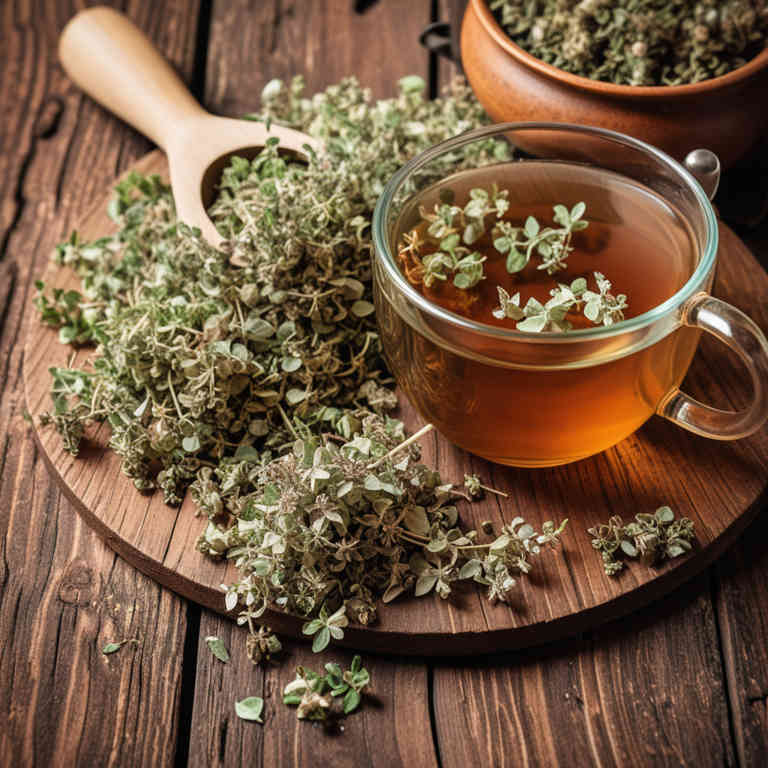
Origanum vulgare herbal teas are used to support digestion and relieve gastrointestinal discomfort due to their carminative properties.
They are also commonly consumed to alleviate symptoms of nausea, bloating, and indigestion, making them a popular remedy for digestive ailments. Additionally, these teas are valued for their anti-inflammatory and antioxidant benefits, which may help reduce inflammation and boost the immune system. The calming effects of origanum vulgare make it useful in reducing stress and promoting relaxation, often consumed as a soothing bedtime tea.
Overall, its versatility and numerous health benefits contribute to its widespread use in traditional and modern herbal medicine.
60. Symphytum officinale
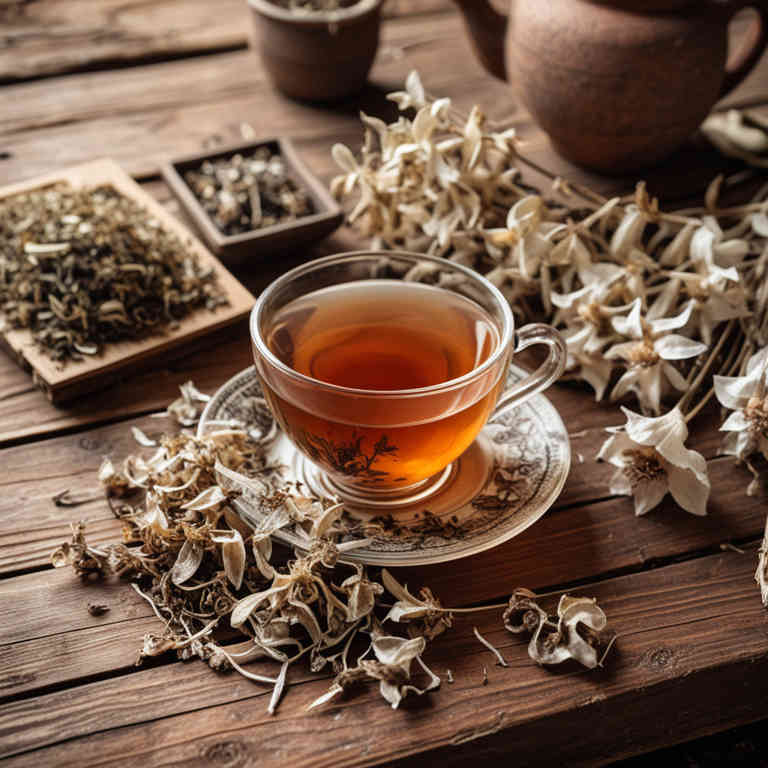
Symphytum officinale herbal teas are used to support bone health and promote the healing of fractures and wounds due to their high concentration of allantoin, which has soothing and regenerative properties.
These teas are also valued for their ability to reduce inflammation and ease pain, making them beneficial for conditions such as arthritis and muscle soreness. Additionally, they may aid in improving skin conditions by promoting cellular repair and reducing irritation. The mild laxative effect of symphytum officinale can also help with digestive issues, supporting overall gastrointestinal health.
Because of these diverse benefits, it is often used in traditional medicine and herbal remedies to address a range of health concerns.
61. Cyperus rotundus
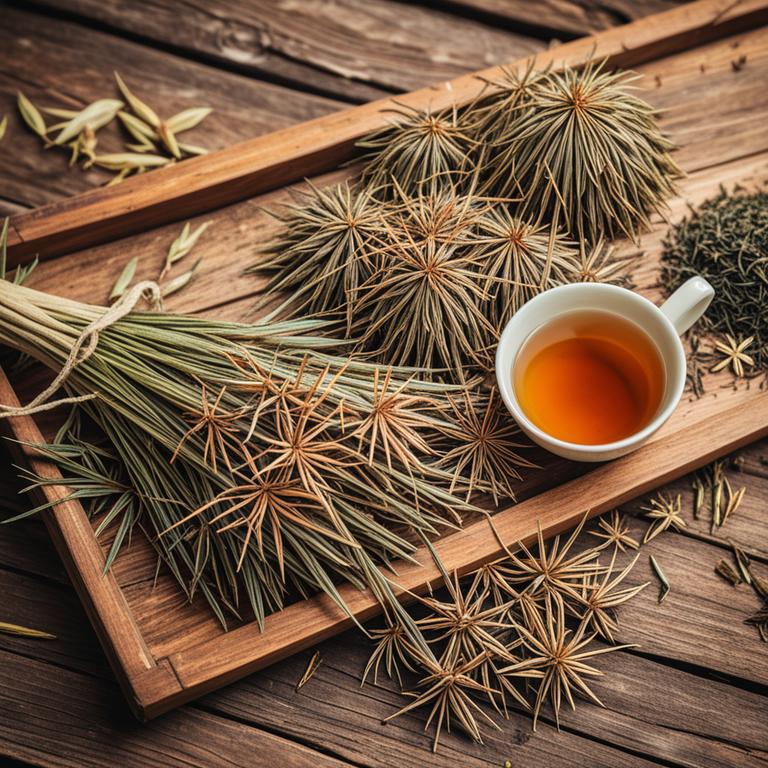
Cyperus rotundus herbal teas are used to support digestive health by promoting regular bowel movements and alleviating symptoms of indigestion.
These teas are also valued for their potential to reduce inflammation and ease symptoms of urinary tract infections due to their diuretic properties. Additionally, they are often consumed to manage menstrual discomfort and hormonal imbalances, making them a popular remedy in traditional medicine. The plant's natural compounds are believed to have antimicrobial and antioxidant effects, contributing to overall wellness.
Because of these benefits, cyperus rotundus herbal teas are widely used in both Ayurvedic and folk medicine practices around the world.
62. Plantago lanceolata
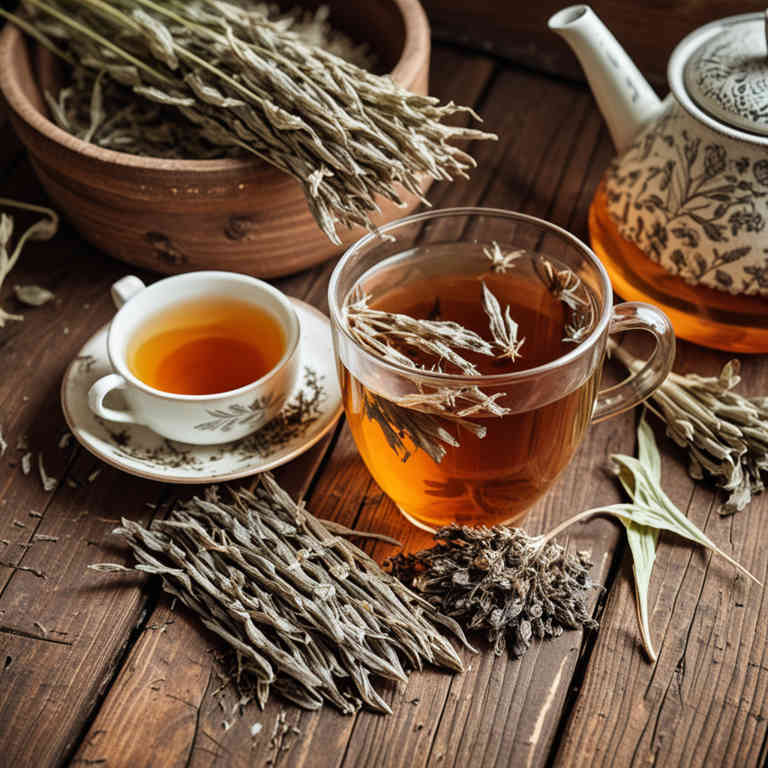
Plantago lanceolata herbal teas are used to support respiratory health by soothing coughs and reducing inflammation in the airways.
They are also beneficial for digestive wellness, helping to alleviate symptoms of indigestion and irritable bowel syndrome due to their mild laxative properties. Additionally, these teas are known to promote skin health by reducing inflammation and aiding in the healing of minor wounds and skin irritations. The plant's high content of mucilage and antioxidants contributes to its calming and healing effects on the body.
Because of these properties, plantago lanceolata herbal teas are often recommended for natural remedies in traditional medicine practices.
63. Paeonia lactiflora
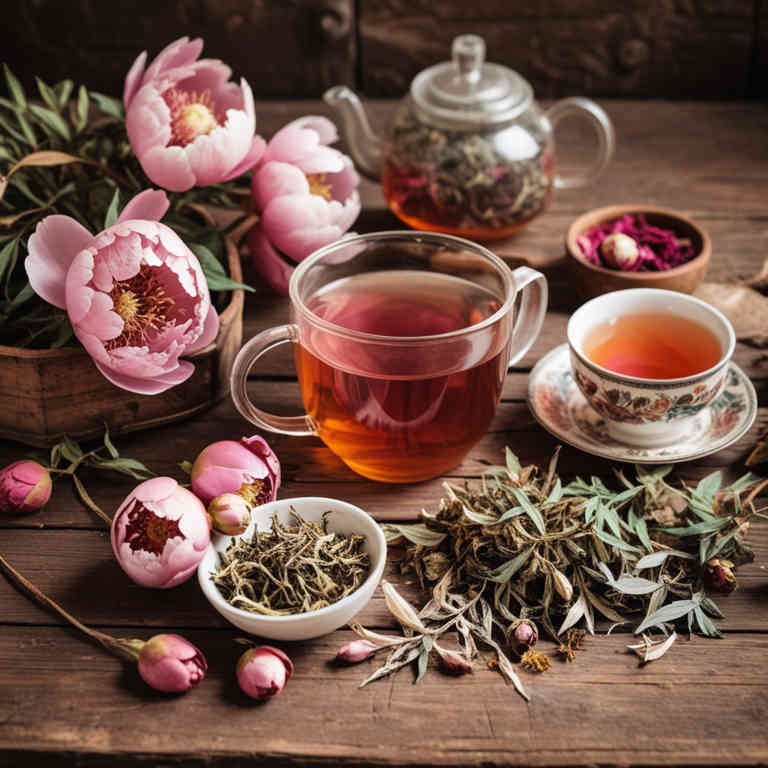
Paeonia lactiflora herbal teas are used to promote relaxation and reduce stress due to their calming properties.
These teas are also known to support digestive health by soothing the stomach and alleviating symptoms of indigestion. Additionally, they may help in managing menopausal symptoms such as hot flashes and mood swings. The plant's compounds are believed to have anti-inflammatory and antioxidant effects, contributing to overall wellness.
Because of these benefits, paeonia lactiflora herbal teas are increasingly popular in traditional and modern herbal medicine practices.
64. Syringa vulgaris

Syringa vulgaris herbal teas are used to support digestive health by promoting the secretion of digestive enzymes and easing symptoms of indigestion.
These teas are also valued for their calming properties, which can help reduce stress and anxiety when consumed regularly. The plant's natural compounds may contribute to its ability to soothe inflammation in the gastrointestinal tract. Additionally, syringa vulgaris herbal teas are believed to aid in respiratory health by helping to clear mucus and ease congestion.
Because of their mild and soothing nature, they are often recommended as a gentle remedy for those seeking natural support for overall wellness.
65. Cannabis sativa
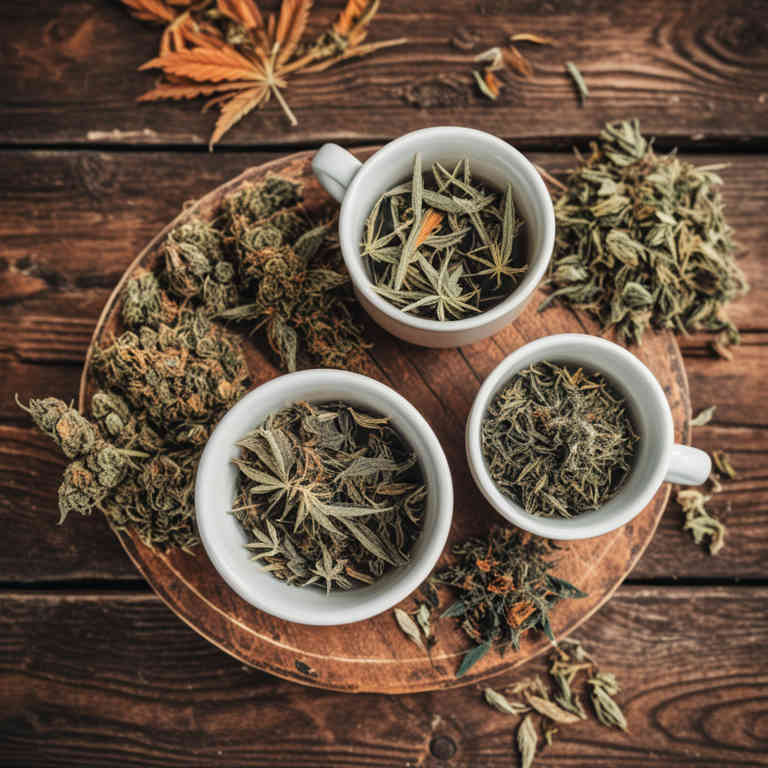
Cannabis sativa herbal teas are used to promote relaxation and reduce stress by interacting with the body's endocannabinoid system.
These teas can also help alleviate symptoms of anxiety and insomnia due to their mild sedative effects. Additionally, they are often consumed for their potential anti-inflammatory and pain-relieving properties. Some individuals use cannabis sativa herbal teas to support digestive health and ease nausea.
Overall, these teas are valued for their holistic benefits, offering a natural approach to wellness and self-care.
66. Hydrastis canadensis

Hydrastis canadensis herbal teas are used to support digestive health by promoting the production of gastric juices and aiding in the digestion of food.
They are also known to help with respiratory issues, such as coughs and bronchitis, due to their antimicrobial and anti-inflammatory properties. Additionally, these teas are often consumed to enhance mental clarity and focus, as they contain compounds that may stimulate the nervous system. The plant, commonly known as goldenseal, has been traditionally used in Native American medicine for its healing properties.
Because of its natural active ingredients, hydrastis canadensis herbal teas are valued for their potential to support overall wellness and natural healing processes.
67. Cymbopogon martinii

Cymbopogon martinii herbal teas are used to promote relaxation and reduce stress due to their calming properties.
These teas contain essential oils like citral, which have been shown to have a soothing effect on the nervous system. They are also commonly used to alleviate symptoms of anxiety and insomnia by helping to calm the mind and improve sleep quality. Additionally, cymbopogon martinii herbal teas may support digestive health by easing bloating and promoting a healthy gut environment.
Their natural aroma makes them a popular choice for aromatherapy and as a natural alternative to synthetic stress-relievers.
68. Moringa oleifera
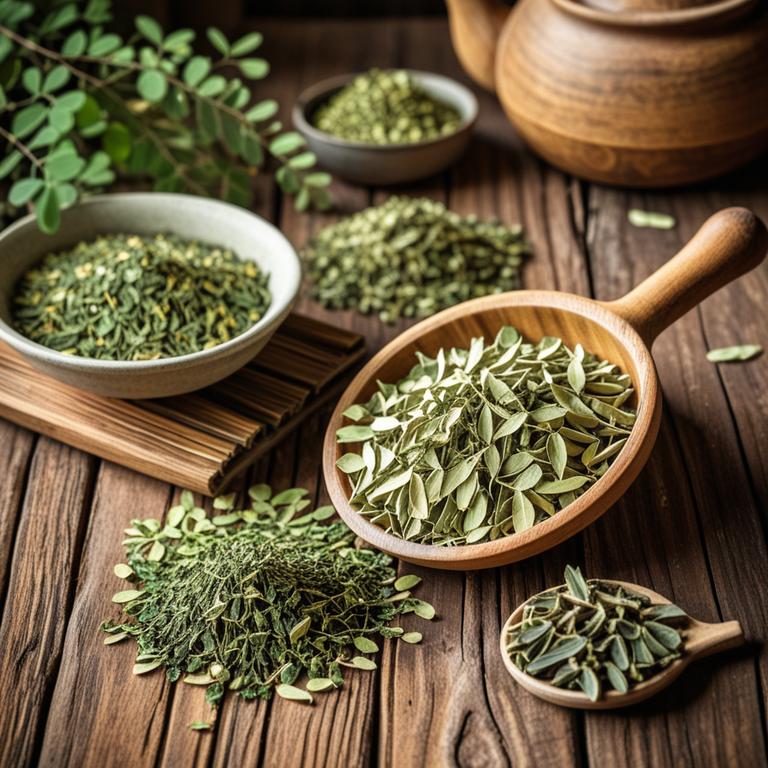
Moringa oleifera herbal teas are used to support overall health and well-being through their rich nutritional profile.
These teas are known for their high content of vitamins, minerals, and antioxidants, which can help boost the immune system and reduce inflammation. They are also used to aid in digestion and promote detoxification by stimulating the liver and kidneys. Additionally, moringa tea may help regulate blood sugar levels and improve skin health due to its anti-aging properties.
Because of these benefits, moringa oleifera herbal teas are increasingly popular as a natural remedy and dietary supplement.
69. Tribulus terrestris
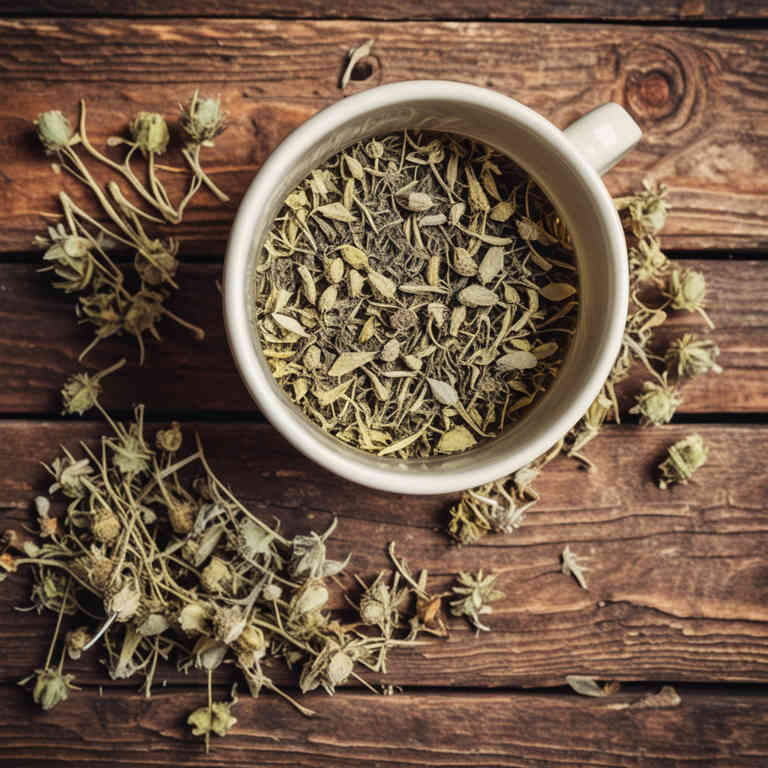
Tribulus terrestris herbal teas are used to enhance physical performance and support sexual health due to their purported ability to increase testosterone levels.
These teas are often consumed by athletes and individuals seeking to improve stamina, strength, and muscle growth. They may also aid in reducing stress and promoting overall vitality by balancing hormone levels. Additionally, tribulus terrestris is believed to support kidney function and improve urinary health.
Its use is rooted in traditional medicine systems, where it has been valued for centuries for its potential therapeutic benefits.
70. Tilia europaea
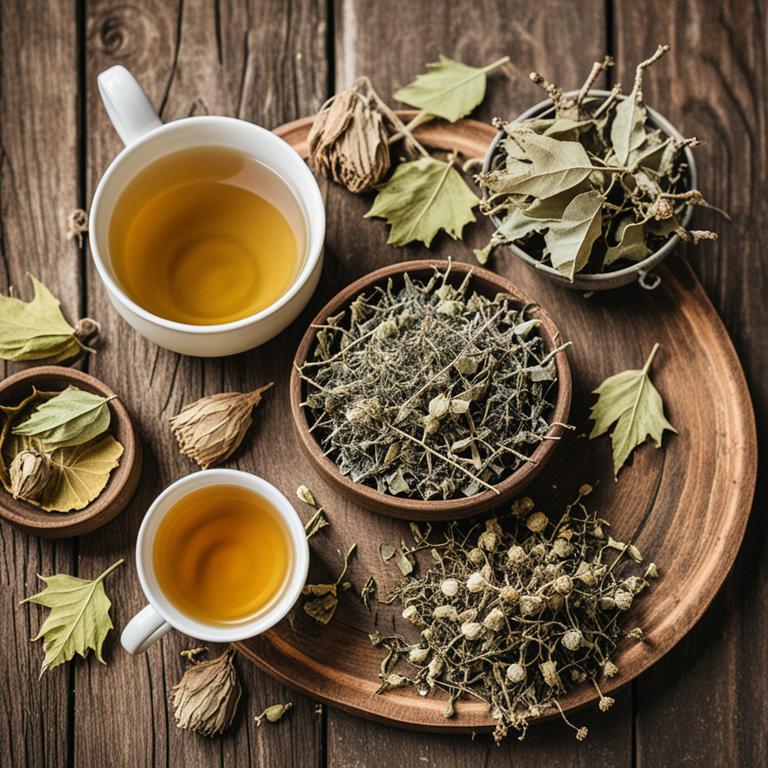
Tilia europaea herbal teas are used to promote relaxation and alleviate stress due to their calming properties.
These teas contain compounds that may help reduce anxiety and improve mood by supporting the nervous system. They are also known to aid in digestion by soothing the gastrointestinal tract and reducing inflammation. Additionally, tilia europaea teas can be beneficial for respiratory health, helping to ease symptoms of coughs and colds.
Their mild, sweet flavor makes them a popular choice for both therapeutic and daily consumption.
71. Echinacea angustifolia
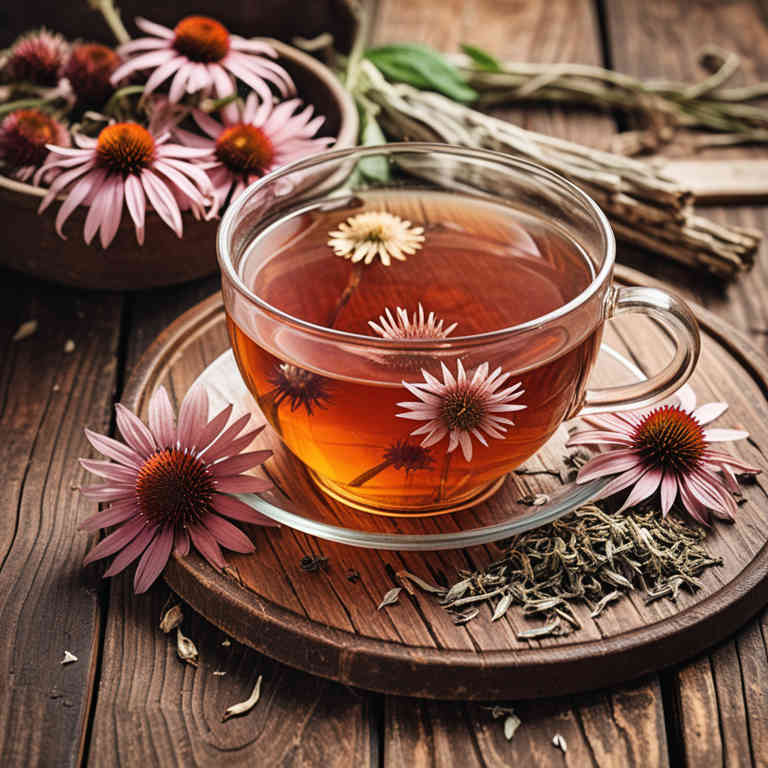
Echinacea angustifolia herbal teas are used to support immune system function and reduce the severity and duration of colds and flu.
They contain compounds that may stimulate the production of white blood cells, which help fight off infections. These teas are also known for their anti-inflammatory properties, which can help alleviate symptoms of respiratory infections. Additionally, echinacea angustifolia is often used to promote overall wellness and boost energy levels.
Its popularity as a natural remedy stems from its potential to enhance the body's natural defenses without the side effects associated with pharmaceutical treatments.
72. Calendula officinalis
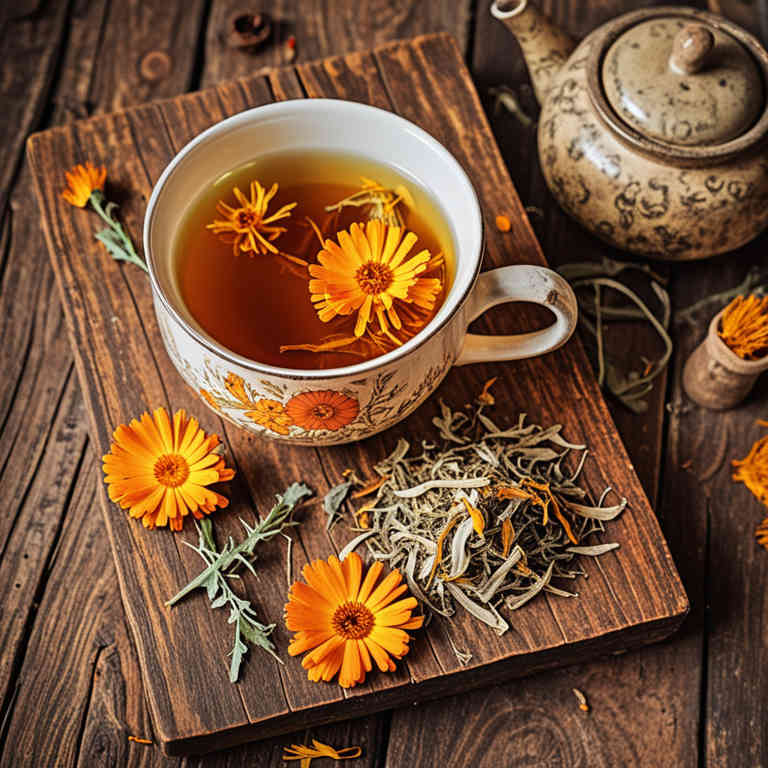
Calendula officinalis herbal teas are used to promote digestive health by soothing the stomach and reducing inflammation in the gastrointestinal tract.
They are also commonly used to alleviate symptoms of skin conditions such as eczema and minor burns due to their anti-inflammatory and antimicrobial properties. These teas can help reduce stress and anxiety by calming the nervous system, making them a popular choice for relaxation. Additionally, calendula officinalis is known for its ability to support wound healing and improve the appearance of the skin when applied topically.
The combination of these benefits makes calendula officinalis herbal teas a versatile and valuable remedy in both internal and external applications.
73. Althaea officinalis
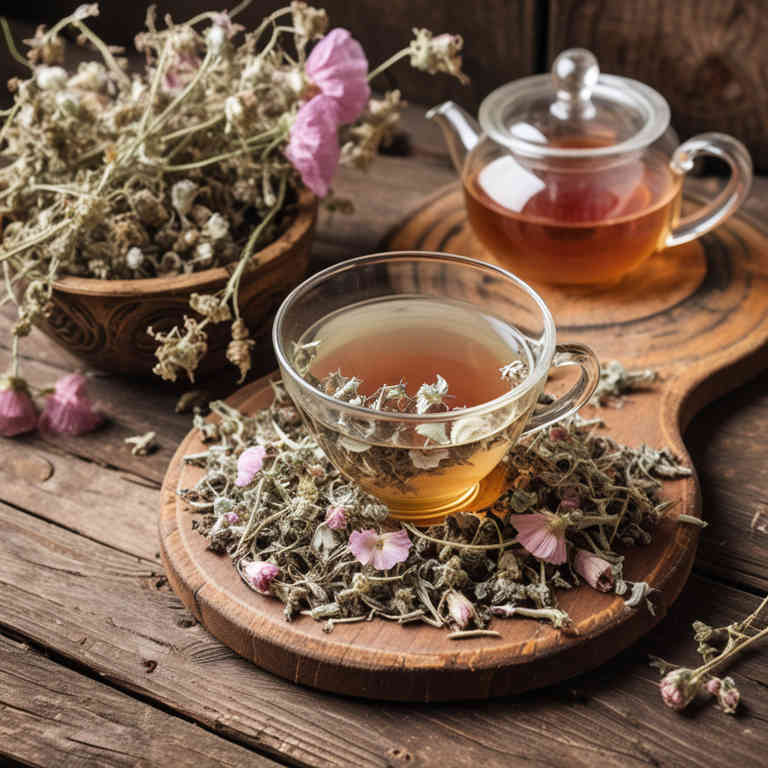
Althaea officinalis herbal teas are used to soothe respiratory conditions such as coughs, sore throats, and bronchitis due to their mucilage content, which coats and protects irritated mucous membranes.
They are also valued for their mild laxative properties, helping to relieve constipation by softening stool and stimulating bowel movements. Additionally, these teas are known to promote skin health by reducing inflammation and irritation, making them useful in topical applications for eczema or other skin conditions. The anti-inflammatory and antioxidant properties of althaea officinalis contribute to its effectiveness in supporting overall immune function and digestive wellness.
Because of these benefits, althaea officinalis herbal teas are often recommended as a natural remedy for a variety of common ailments.
74. Plantago ovata

Plantago ovata herbal teas are used to support digestive health by promoting regular bowel movements and relieving constipation due to their high mucilage content, which absorbs water and softens stool.
These teas are also beneficial for reducing inflammation in the gastrointestinal tract, making them a natural remedy for conditions like irritable bowel syndrome. Additionally, plantago ovata herbal teas may aid in detoxification by helping the body eliminate toxins through the digestive system. They are often consumed as a mild, soothing beverage that can help alleviate discomfort associated with digestive issues.
Because of their gentle nature and numerous health benefits, plantago ovata herbal teas are a popular choice for those seeking natural support for digestive wellness.
75. Cimicifuga racemosa
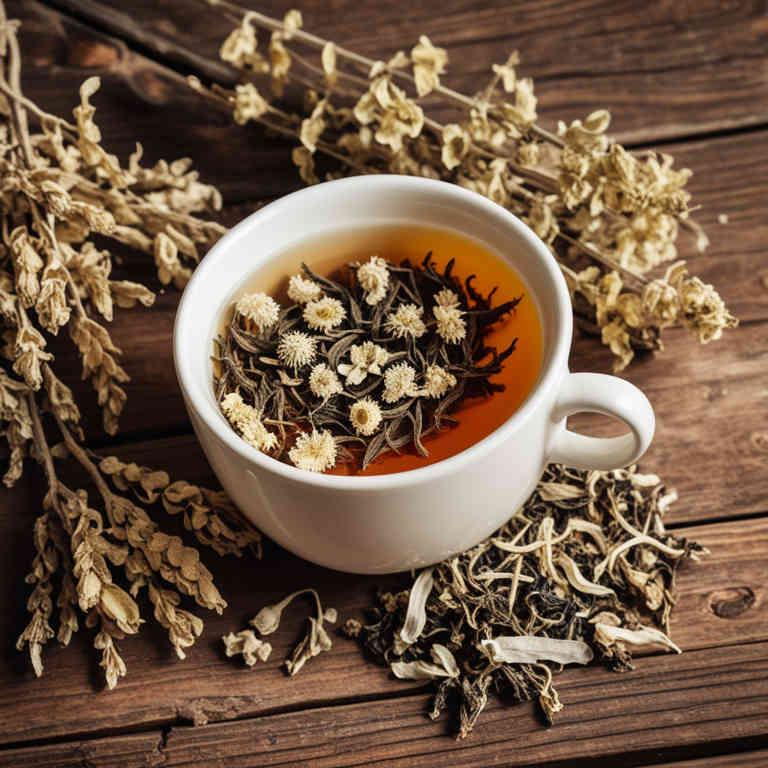
Cimicifuga racemosa herbal teas are used to support women's health, particularly in managing symptoms associated with hormonal changes such as menopause.
They are commonly consumed to alleviate hot flashes, night sweats, and mood swings that often accompany this stage of life. The active compounds in cimicifuga racemosa, such as triterpene glycosides, are believed to have estrogen-like effects that help balance hormone levels. This herb is also used to address menstrual irregularities and reduce cramping during menstruation.
Due to its natural composition and potential to provide relief without the side effects of synthetic medications, cimicifuga racemosa herbal teas are a popular choice for those seeking holistic health solutions.
76. Centella asiatica

Centella asiatica herbal teas are used to promote skin health and wound healing due to their rich content of saponins and triterpenoids, which stimulate collagen production and enhance tissue repair.
These teas are also valued for their calming effects, as they contain compounds that may help reduce stress and anxiety by supporting the nervous system. Additionally, centella asiatica is believed to improve circulation and support liver function, making it beneficial for overall wellness. Its antioxidant properties help combat free radicals, contributing to anti-aging and immune support.
Because of these diverse benefits, centella asiatica herbal teas are increasingly popular in both traditional and modern holistic health practices.
77. Taraxacum officinale

Taraxacum officinale herbal teas are used to support digestive health by stimulating bile production and aiding in the digestion of fats.
They are also known to have diuretic properties, which can help in flushing out toxins and reducing water retention in the body. Additionally, these teas are often consumed to alleviate symptoms of inflammation and promote liver function due to their rich content of antioxidants and bioactive compounds. The mild and slightly bitter taste of dandelion tea makes it a popular choice for those seeking natural remedies for detoxification and overall wellness.
Because of its versatility and potential health benefits, taraxacum officinale herbal tea is widely used in traditional medicine and modern herbal practices alike.
78. Berberis aristata
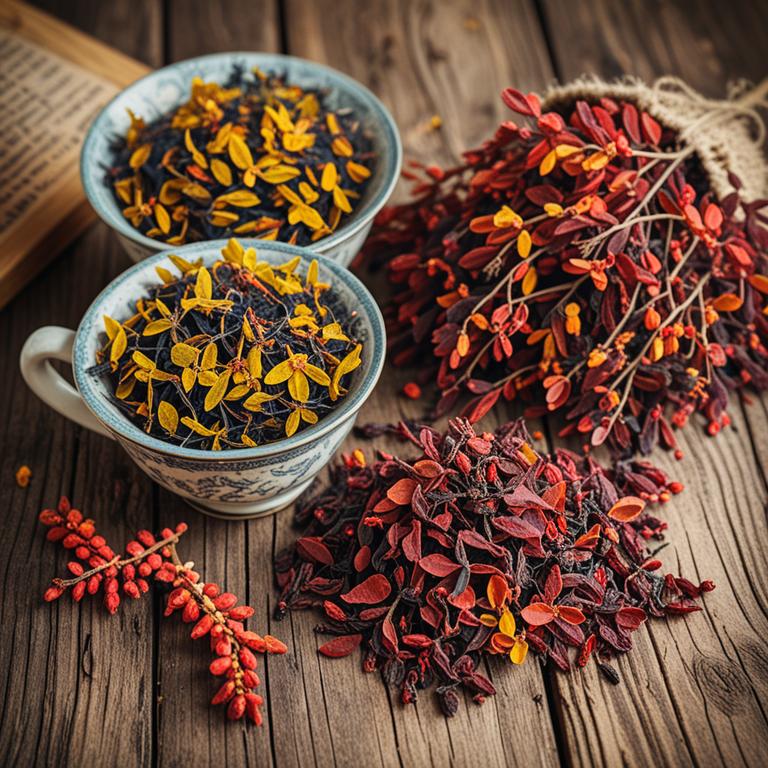
Berberis aristata herbal teas are used to support digestive health due to their anti-inflammatory and antimicrobial properties.
The active compound berberine in these teas helps in reducing gut inflammation and promoting healthy gut flora. They are also used to manage blood sugar levels by enhancing insulin sensitivity and improving glucose metabolism. Additionally, berberis aristata teas may aid in weight management by boosting metabolic rate and reducing appetite.
These teas are valued for their natural ability to address various health concerns without the side effects of synthetic medications.
79. Dandelion
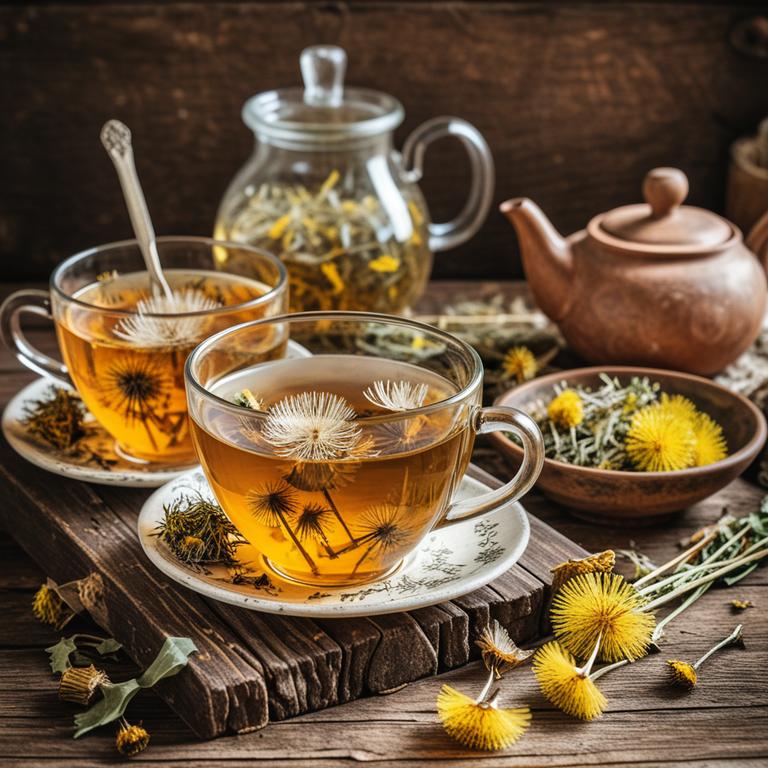
Dandelion herbal teas are used to support liver health and promote digestion due to their rich content of antioxidants and bitter compounds that stimulate bile production.
These teas can also aid in detoxification by helping the body eliminate toxins more efficiently. Additionally, dandelion tea is known to have diuretic properties, which can help reduce fluid retention and support kidney function. It is often consumed for its mild laxative effects, which can relieve constipation without harsh side effects.
Overall, dandelion herbal teas are valued for their natural ability to enhance overall wellness and support various bodily functions.
80. Prunus spinosa

Prunus spinosa herbal teas are used to support digestive health due to their mild astringent properties that can help soothe gastrointestinal discomfort.
They are also valued for their potential to reduce inflammation and promote skin health, thanks to the presence of bioactive compounds like tannins and flavonoids. These teas may aid in weight management by enhancing metabolic function and reducing appetite, making them a popular choice for those seeking natural dietary support. Additionally, they are often consumed to alleviate stress and improve mental clarity, as they contain compounds that may influence mood and cognitive function.
Overall, prunus spinosa herbal teas are appreciated for their versatility and gentle yet effective contributions to holistic wellness.
81. Strychnos nux-vomica
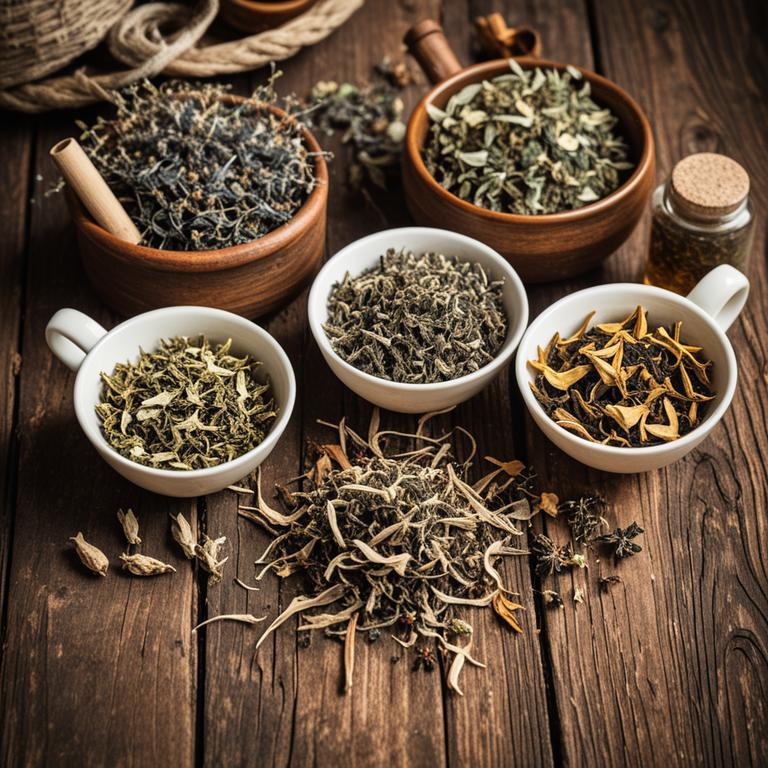
Strychnos nux-vomica herbal teas are used to stimulate the nervous system and enhance mental alertness due to their alkaloid content, which can increase neurotransmitter activity.
These teas are traditionally employed in traditional Chinese medicine to treat conditions such as depression, fatigue, and insomnia by improving circulation and balancing energy flow. However, they are not recommended for regular consumption due to the potential toxicity of their compounds, which can cause severe side effects if misused. The use of these teas is typically limited to short-term therapeutic applications under strict medical supervision.
Despite their potential benefits, their high risk of poisoning necessitates caution and professional guidance when considering their use.
82. Orthosiphon stamineus
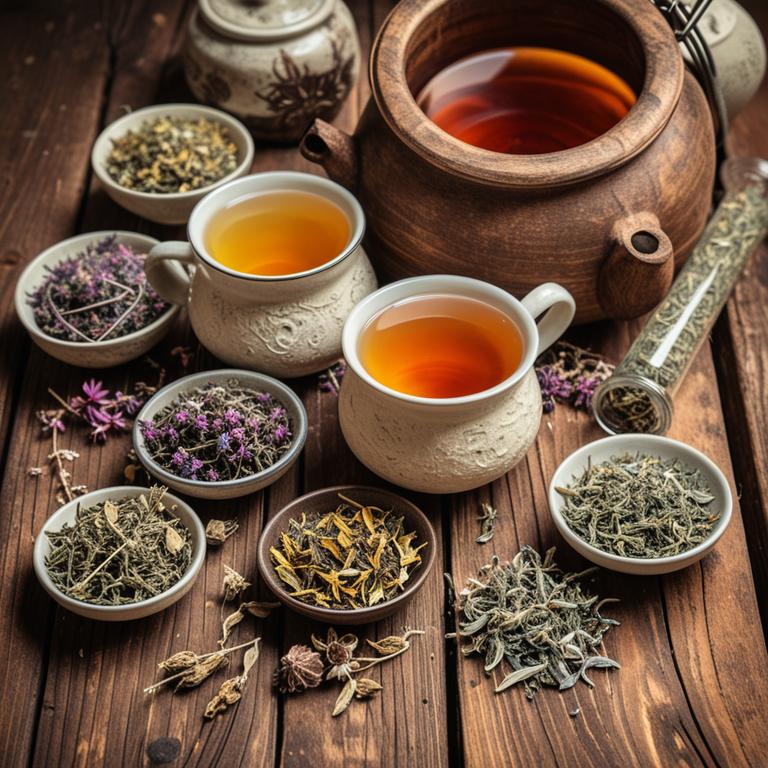
Orthosiphon stamineus herbal teas are used to support kidney health by promoting the elimination of toxins and excess fluids from the body.
These teas are also known to help reduce swelling and inflammation, making them beneficial for individuals suffering from urinary tract infections or kidney stones. Additionally, orthosiphon stamineus is believed to aid in lowering blood pressure due to its diuretic properties, which can help manage hypertension. The herb is rich in antioxidants, which contribute to its overall health benefits, including reducing oxidative stress and supporting immune function.
Because of these properties, orthosiphon stamineus herbal teas are often recommended as a natural remedy for various health concerns related to the urinary and cardiovascular systems.
83. Avena sativa
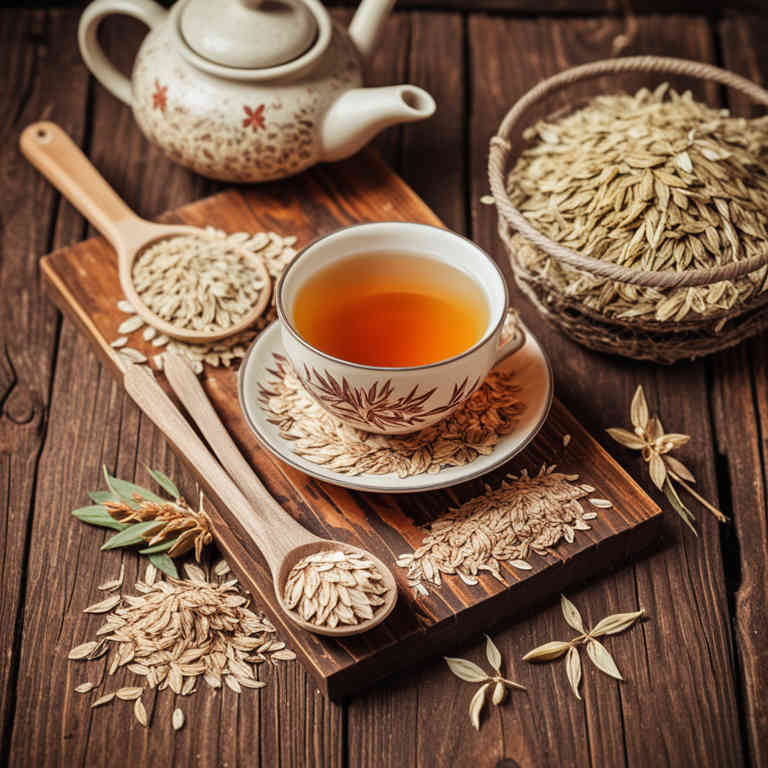
Avena sativa herbal teas are used to promote relaxation and reduce stress due to their calming properties.
They are often consumed to support better sleep quality by helping to soothe the nervous system. These teas may also aid in digestion by soothing the gastrointestinal tract and reducing inflammation. Additionally, avena sativa is believed to have mild diuretic effects, which can help in maintaining healthy kidney function.
Overall, the versatility of avena sativa herbal teas makes them a popular choice for those seeking natural remedies for both mental and physical well-being.
84. Artemisia annua

Artemisia annua herbal teas are used to support immune function and alleviate symptoms of colds and flu due to their high concentration of artemisinin, a compound with antimalarial properties.
They are also employed in traditional medicine to reduce fever and treat inflammatory conditions, thanks to their antimicrobial and antioxidant effects. The tea may help in managing digestive issues by promoting healthy gut flora and soothing the stomach lining. Additionally, it is sometimes used to improve liver function and detoxification processes in the body.
These benefits make artemisia annua a valuable natural remedy for enhancing overall wellness and supporting the body's natural defenses.
85. Rhus toxicaria
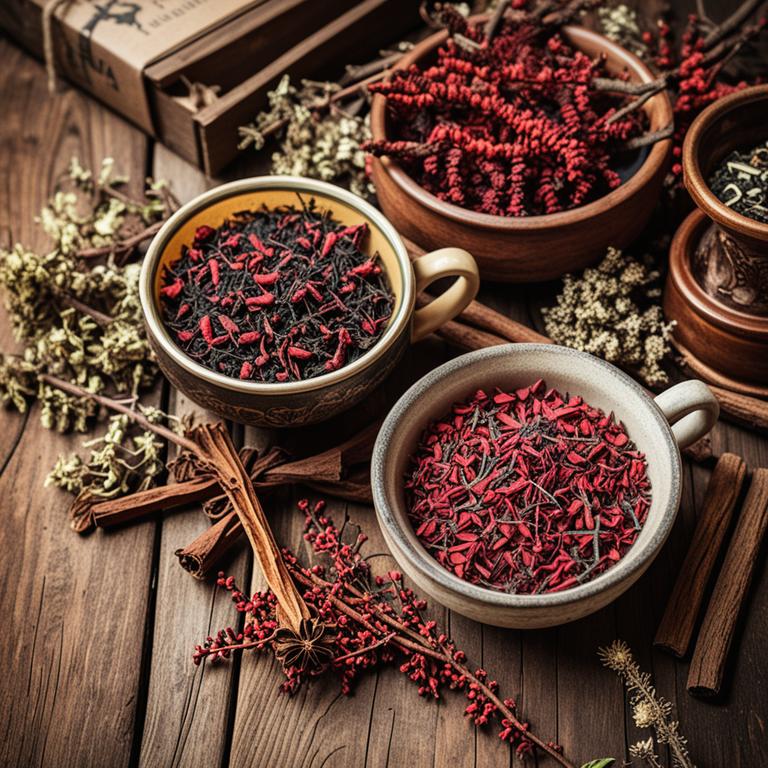
Rhus toxicaria herbal teas are used to alleviate symptoms of skin conditions such as eczema and psoriasis due to their anti-inflammatory properties.
These teas are also known to help reduce itching and redness associated with dermatitis, making them a popular choice in natural skincare remedies. Additionally, Rhus toxicaria is believed to support the body's detoxification processes, which can contribute to overall skin health. Its ability to promote circulation may also aid in the healing of minor wounds and rashes.
Because of these benefits, it is often incorporated into herbal medicine practices for its soothing and restorative effects on the skin.
86. Tussilago farfara

Tussilago farfara herbal teas are used to soothe respiratory conditions such as coughs, bronchitis, and asthma due to their expectorant and anti-inflammatory properties.
These teas help loosen mucus and phlegm, making it easier to expel from the respiratory tract, which can provide relief from congestion and irritation. They are also known to have mild antitussive effects, which can help reduce the frequency and intensity of coughing. Additionally, the presence of compounds like flavonoids and mucilage in the herb may contribute to its ability to protect and heal the lining of the throat and airways.
Because of these benefits, tussilago farfara herbal teas are often recommended as a natural remedy for individuals seeking to support their respiratory health.
87. Agrimonia eupatoria

Agrimonia eupatoria herbal teas are used to support digestive health by soothing the stomach and reducing inflammation.
They are particularly beneficial for individuals suffering from indigestion, bloating, or irritable bowel syndrome due to their mild astringent properties. The tea also helps in relieving symptoms of diarrhea and can promote a feeling of fullness after meals. Additionally, agrimonia eupatoria is believed to have mild antioxidant and anti-inflammatory effects that contribute to overall wellness.
These teas are often recommended as a natural remedy for those seeking to improve their gastrointestinal health without the use of pharmaceuticals.
88. Passiflora incarnata
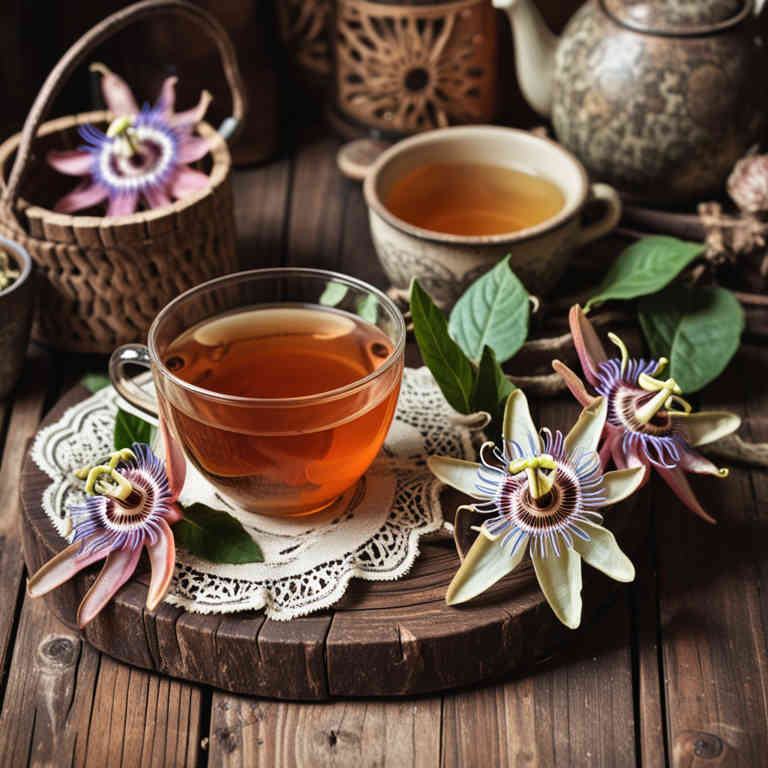
Passiflora incarnata herbal teas are used to promote relaxation and reduce anxiety by calming the nervous system.
They contain compounds that may help alleviate symptoms of stress and insomnia, making them a popular natural remedy for those seeking emotional balance. These teas are also known to support better sleep quality by inducing a sense of tranquility and reducing restlessness. Their mild sedative properties make them suitable for regular consumption without the risk of dependency.
Due to their soothing effects, passiflora incarnata herbal teas are often recommended for individuals dealing with mild to moderate anxiety or sleep disorders.
89. Ananas comosus

Ananas comosus herbal teas are used to promote digestive health due to their high enzyme content, particularly bromelain, which aids in breaking down proteins and reducing inflammation in the gastrointestinal tract.
These teas can also help alleviate symptoms of indigestion, bloating, and nausea by supporting the natural processes of the digestive system. Additionally, ananas comosus herbal teas are known to have antioxidant properties that contribute to overall immune support and cellular health. They may also be used to reduce swelling and pain associated with conditions like osteoarthritis, thanks to their anti-inflammatory effects.
Overall, the versatility of ananas comosus herbal teas makes them a valuable natural remedy for a variety of health concerns.
90. Ocimum sanctum

Ocimum sanctum herbal teas are used to promote overall health and well-being by supporting the immune system and reducing inflammation.
They are particularly beneficial for respiratory conditions, as they can help alleviate symptoms of coughs, colds, and asthma due to their antiseptic and expectorant properties. These teas are also known to improve digestion by stimulating the secretion of digestive enzymes and reducing gastrointestinal discomfort. Additionally, ocimum sanctum is rich in antioxidants, which help combat oxidative stress and may contribute to preventing chronic diseases.
Their calming effects make them a popular choice for stress relief and promoting mental clarity.
91. Polygonum cuspidatum
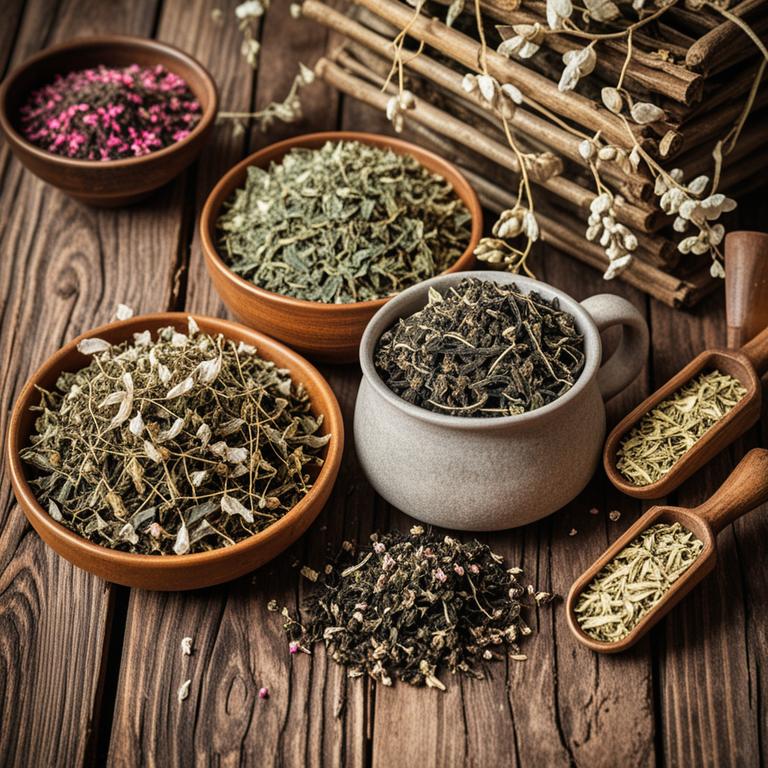
Polygonum cuspidatum herbal teas are used to support liver health and detoxification due to their high concentration of active compounds like resveratrol and flavonoids, which help stimulate liver function and enhance the body's ability to eliminate toxins.
These teas are also known to promote cardiovascular health by improving blood circulation and reducing oxidative stress, thanks to their antioxidant properties. Additionally, they may aid in managing inflammation and supporting metabolic processes, making them beneficial for individuals with conditions like diabetes or metabolic syndrome. The herbal tea is often consumed as a natural remedy to boost overall vitality and immune function, especially during seasonal changes or periods of stress.
Its versatility and wide range of health benefits have made it a popular choice in traditional medicine systems around the world.
92. Cucurbita pepo
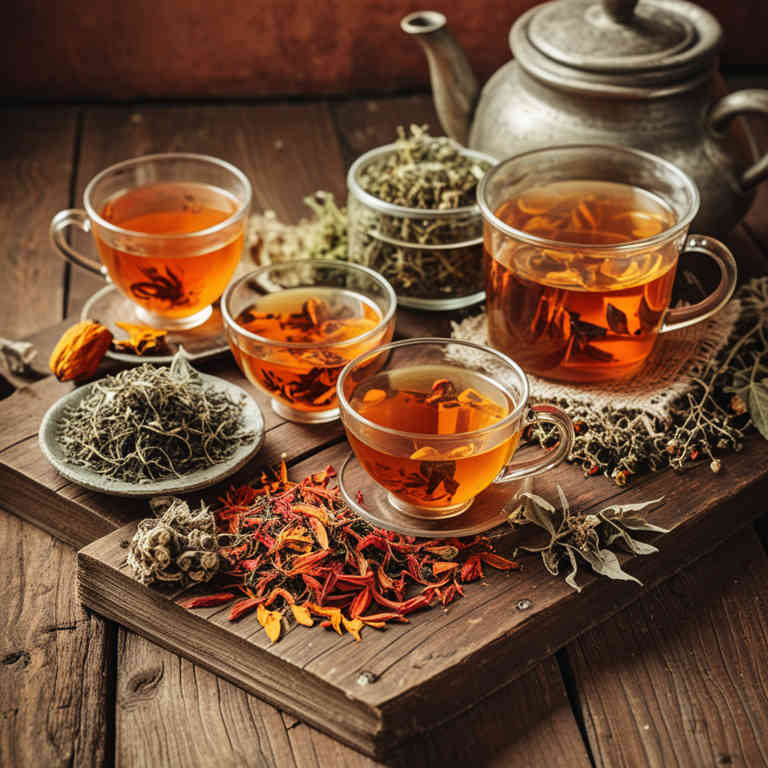
Cucurbita pepo herbal teas are used to promote digestive health due to their mild laxative properties, which help relieve constipation and support regular bowel movements.
These teas are also valued for their calming effects, as they can aid in reducing stress and improving sleep quality. The anti-inflammatory compounds in cucurbita pepo may contribute to its use in soothing respiratory issues such as coughs and sore throats. Additionally, the tea is believed to have antioxidant properties that support overall immune function and cellular health.
Because of these benefits, cucurbita pepo herbal teas are often incorporated into traditional medicine and wellness practices for their holistic healing potential.
93. Withania somnifera
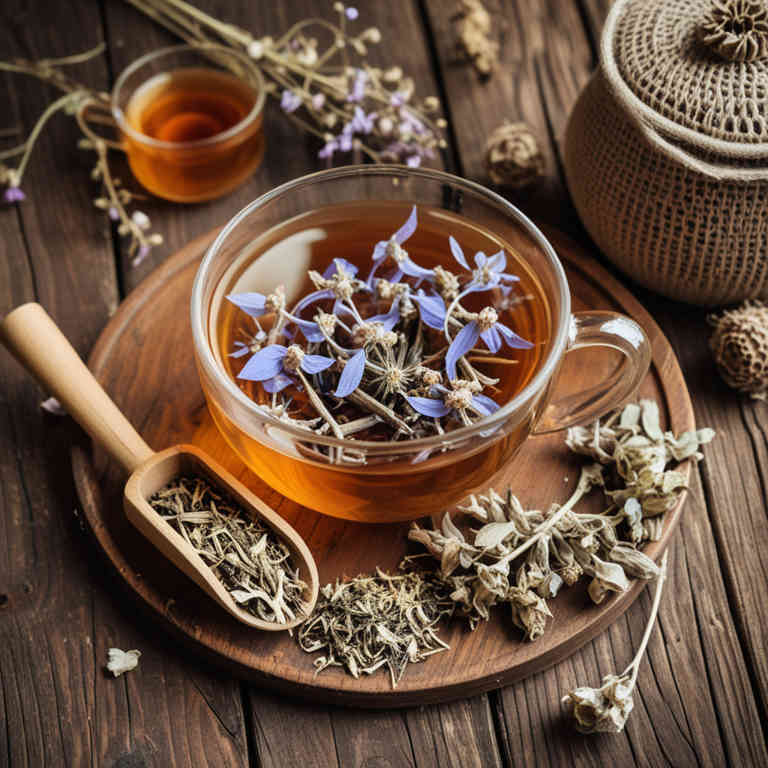
Withania somnifera herbal teas are used to promote relaxation and improve sleep quality due to their adaptogenic properties.
These teas are believed to help reduce stress and anxiety by supporting the body's ability to cope with physical and emotional challenges. They are also used to enhance energy levels and support overall vitality, making them popular in traditional medicine practices. The active compounds in Withania somnifera, such as alkaloids and steroidal lactones, contribute to its calming effects on the nervous system.
As a natural alternative to pharmaceuticals, these teas are increasingly sought after for their holistic approach to health and wellness.
94. Saponaria officinalis
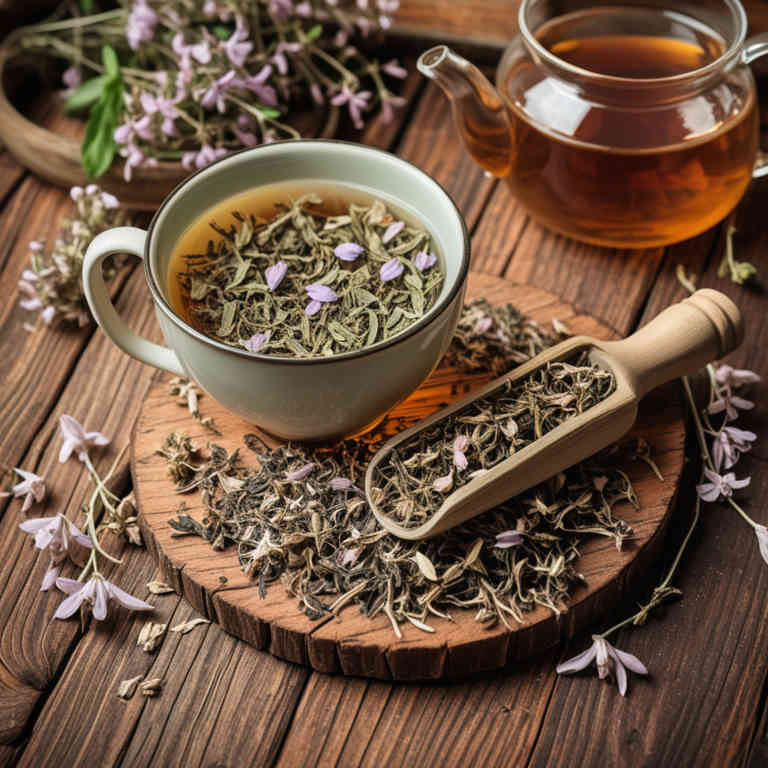
Saponaria officinalis herbal teas are used to support digestive health by promoting the elimination of toxins and improving gut function.
These teas are also valued for their mild diuretic properties, which can help in reducing water retention and supporting kidney function. Additionally, they are often consumed to alleviate symptoms of mild respiratory conditions, such as coughs and congestion, due to their expectorant qualities. The calming effects of saponaria officinalis make it a popular choice for reducing stress and promoting relaxation.
Overall, its versatility and gentle nature make it a beneficial herbal remedy for a range of mild health concerns.
95. Siberian ginseng

Siberian ginseng herbal teas are used to enhance energy levels and reduce fatigue by stimulating the body's natural vitality.
These teas are also known to support the immune system, helping the body defend against infections and illnesses. Additionally, they may aid in improving mental clarity and focus, making them popular among students and professionals. Siberian ginseng is believed to have adaptogenic properties, which help the body manage stress more effectively.
Overall, these teas are valued for their potential to promote overall well-being and resilience in the face of physical and mental challenges.
96. Cinnamon
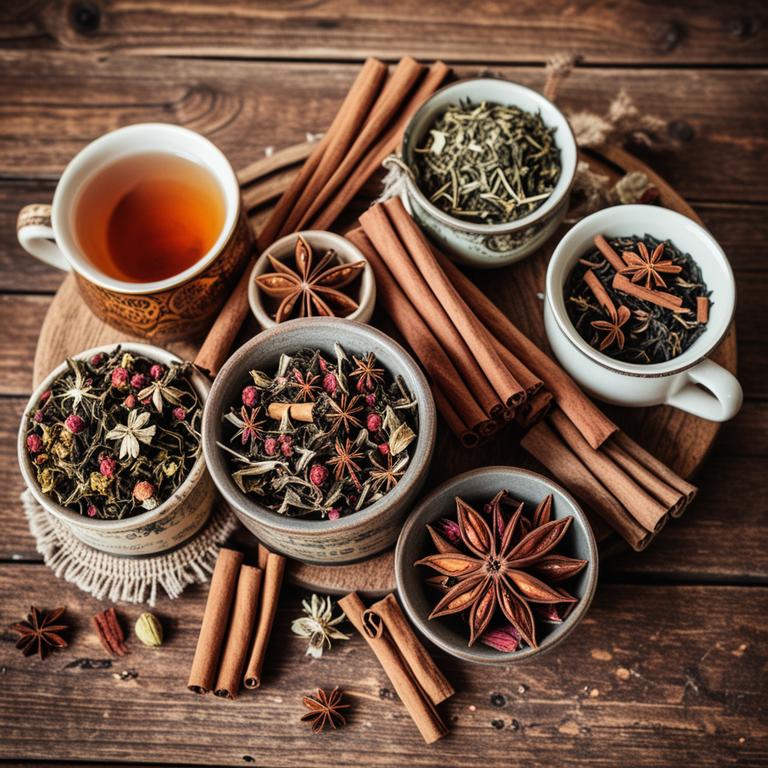
Cinnamon herbal teas are used to support digestion and ease gastrointestinal discomfort by stimulating the release of digestive enzymes and reducing bloating.
They are also used to promote respiratory health, as the warming properties of cinnamon can help soothe sore throats and ease symptoms of colds or bronchitis. Additionally, cinnamon herbal teas are used to enhance mental clarity and reduce stress due to their calming and mood-lifting effects. The antioxidant and anti-inflammatory compounds in cinnamon contribute to its role in boosting the immune system and protecting against oxidative stress.
Overall, these teas are valued for their natural ability to support various aspects of health and well-being.
97. Bacopa monnieri
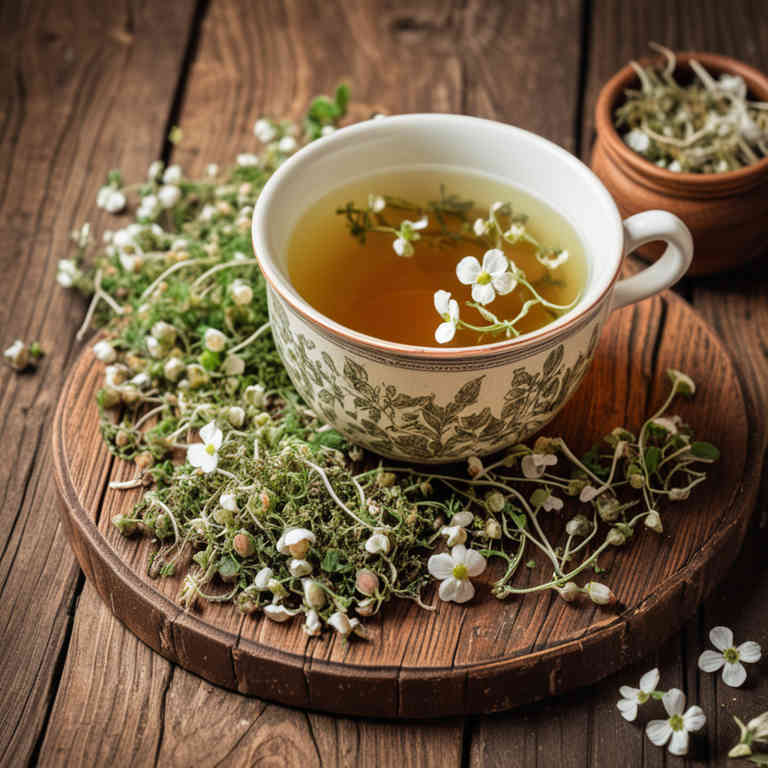
Bacopa monnieri herbal teas are used to enhance cognitive function and memory retention, making them popular among students and professionals seeking mental clarity.
These teas contain compounds like bacosides, which are believed to support brain health by improving neural communication and reducing oxidative stress. Additionally, bacopa monnieri herbal teas are used to alleviate anxiety and stress, promoting a sense of calm and emotional balance. The herb's adaptogenic properties help the body manage stress more effectively, contributing to overall well-being.
Due to these benefits, bacopa monnieri herbal teas are increasingly incorporated into holistic health practices for their natural and supportive effects on mental and emotional health.
98. Spiraea ulmaria

Spiraea ulmaria herbal teas are used to support digestive health and alleviate symptoms of gastrointestinal discomfort.
They are known for their mild diuretic properties, which can help in reducing water retention and promoting urinary health. The tea is also valued for its potential to soothe inflammation and support the immune system. Traditionally, it has been used to treat conditions such as menstrual cramps and skin irritations.
Its gentle nature makes it a popular choice for those seeking natural remedies for everyday health concerns.
99. Salvia miltiorrhiza
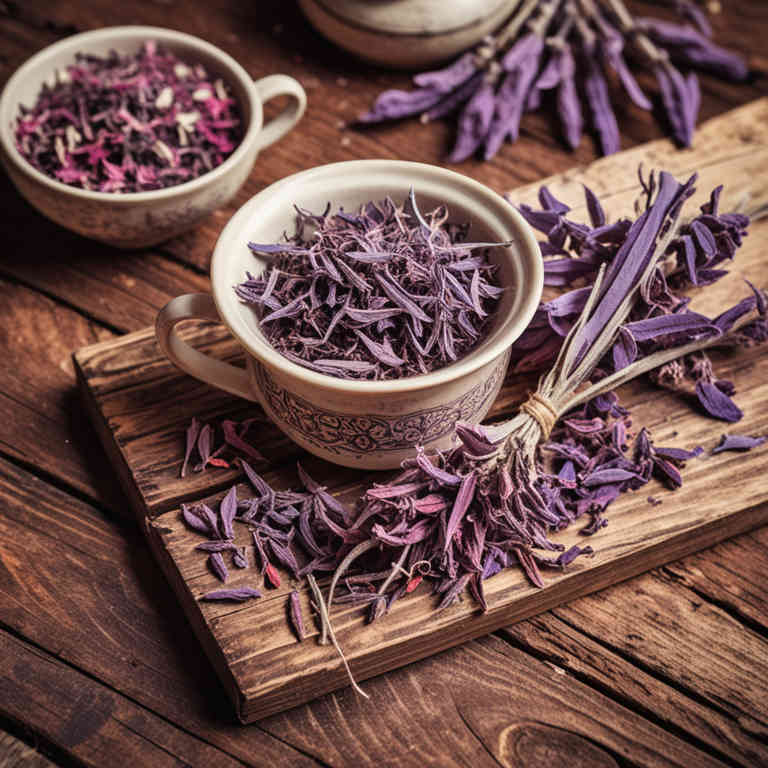
Salvia miltiorrhiza herbal teas are used to promote cardiovascular health by improving blood circulation and reducing cholesterol levels.
They are also valued for their antioxidant properties, which help protect cells from damage caused by free radicals. In traditional Chinese medicine, these teas are used to support liver function and aid in detoxification processes within the body. Additionally, they may help in managing symptoms of anxiety and depression due to their calming effects on the nervous system.
Overall, salvia miltiorrhiza herbal teas are prized for their wide range of health benefits, making them a popular choice for those seeking natural remedies.
100. Rhus typhina

Rhus typhina herbal teas are used to relieve symptoms of arthritis and joint pain due to their anti-inflammatory properties.
The plant, commonly known as sumac, contains compounds that may help reduce inflammation and alleviate discomfort in affected joints. These teas are also believed to support digestive health by stimulating the production of digestive enzymes. Additionally, they may help with skin conditions such as eczema and psoriasis due to their astringent and antiseptic qualities.
Because of these potential benefits, rhus typhina herbal teas are often recommended as a natural remedy for a variety of inflammatory and skin-related ailments.